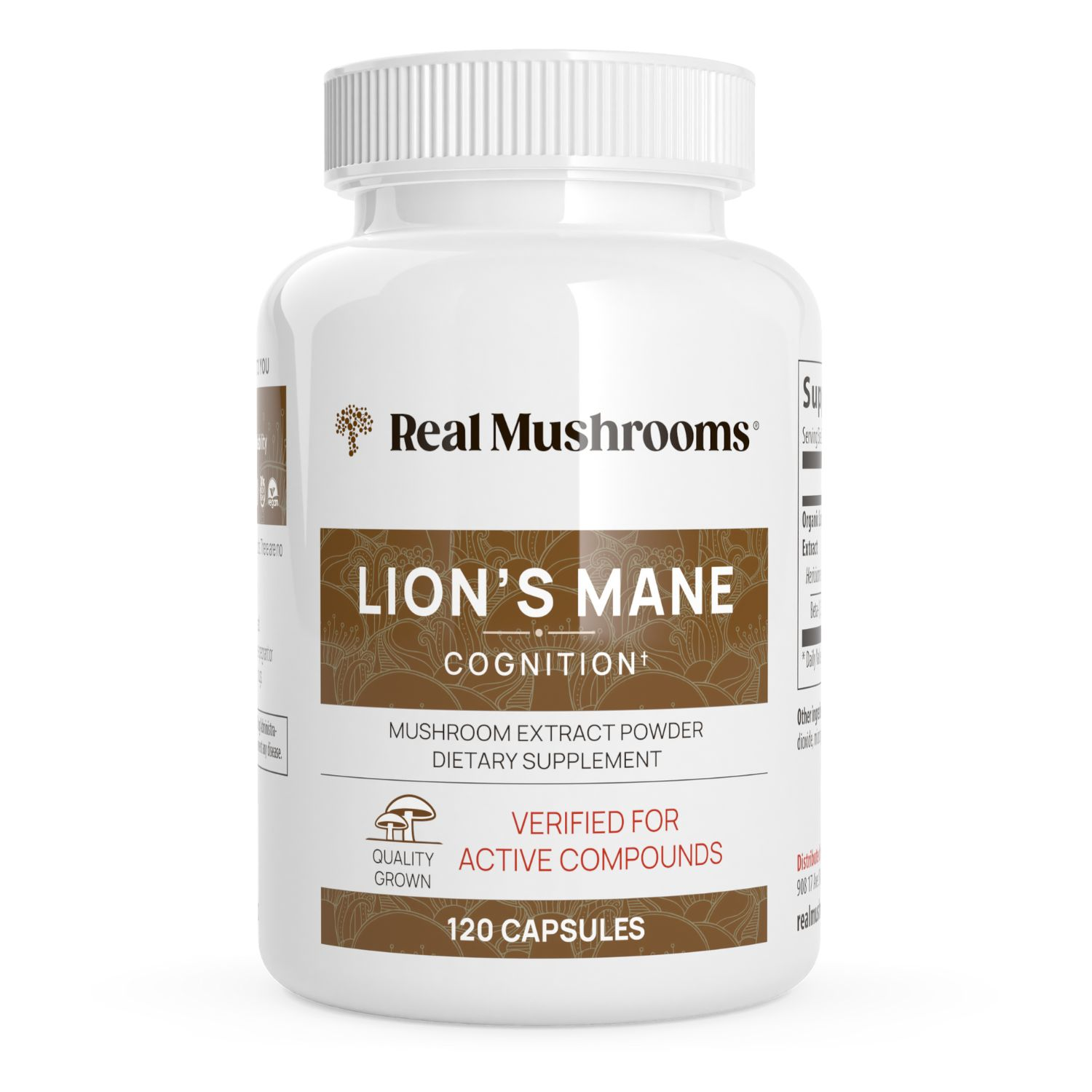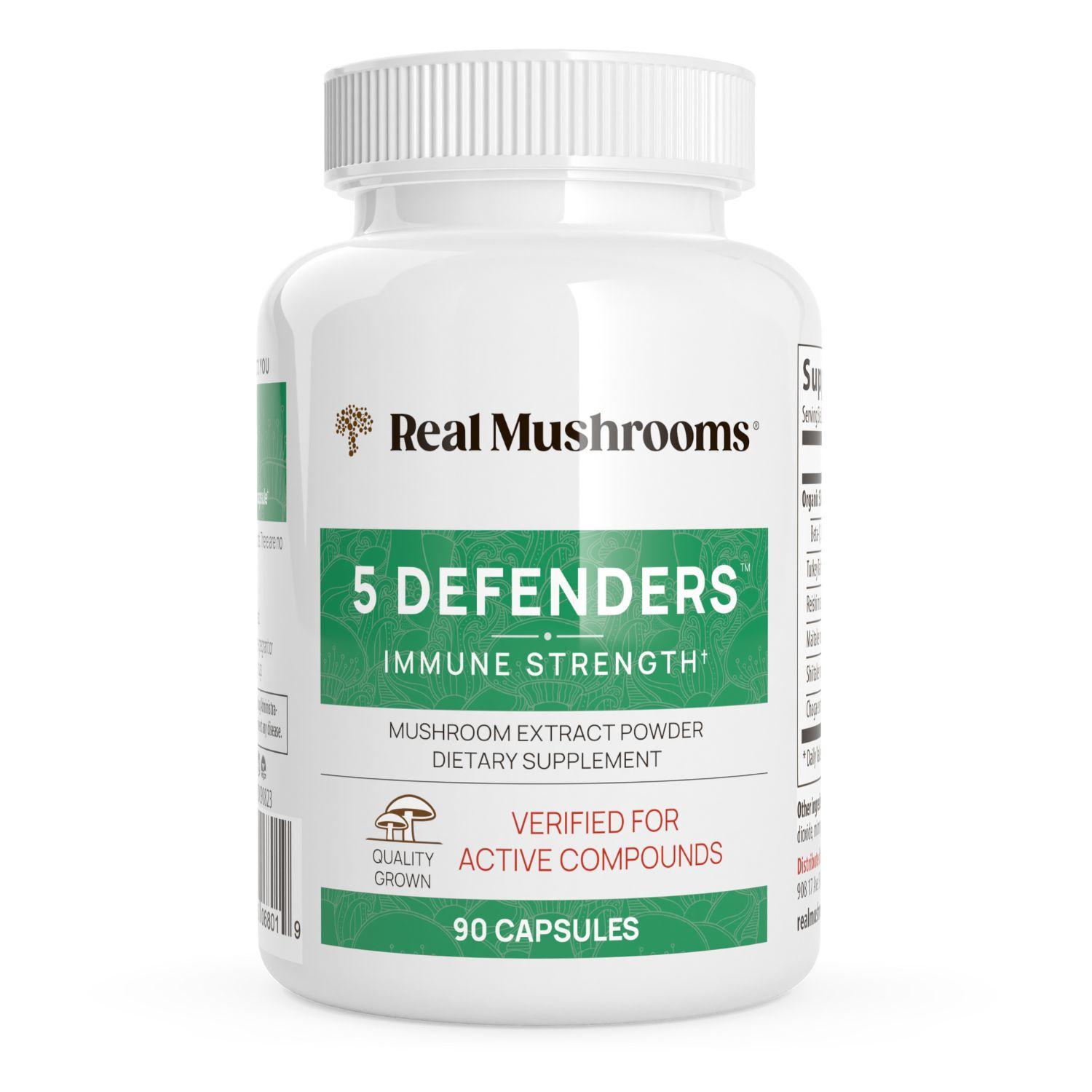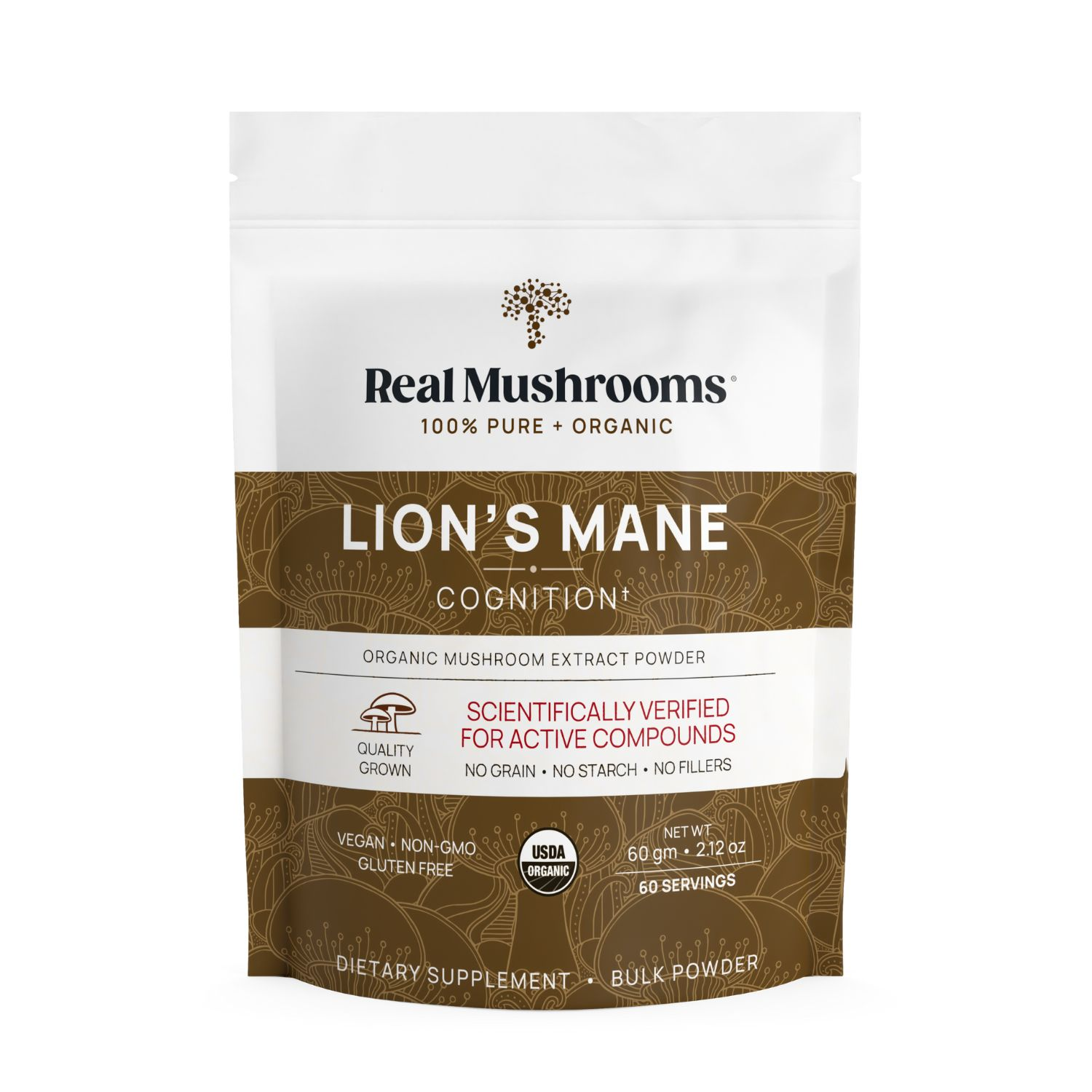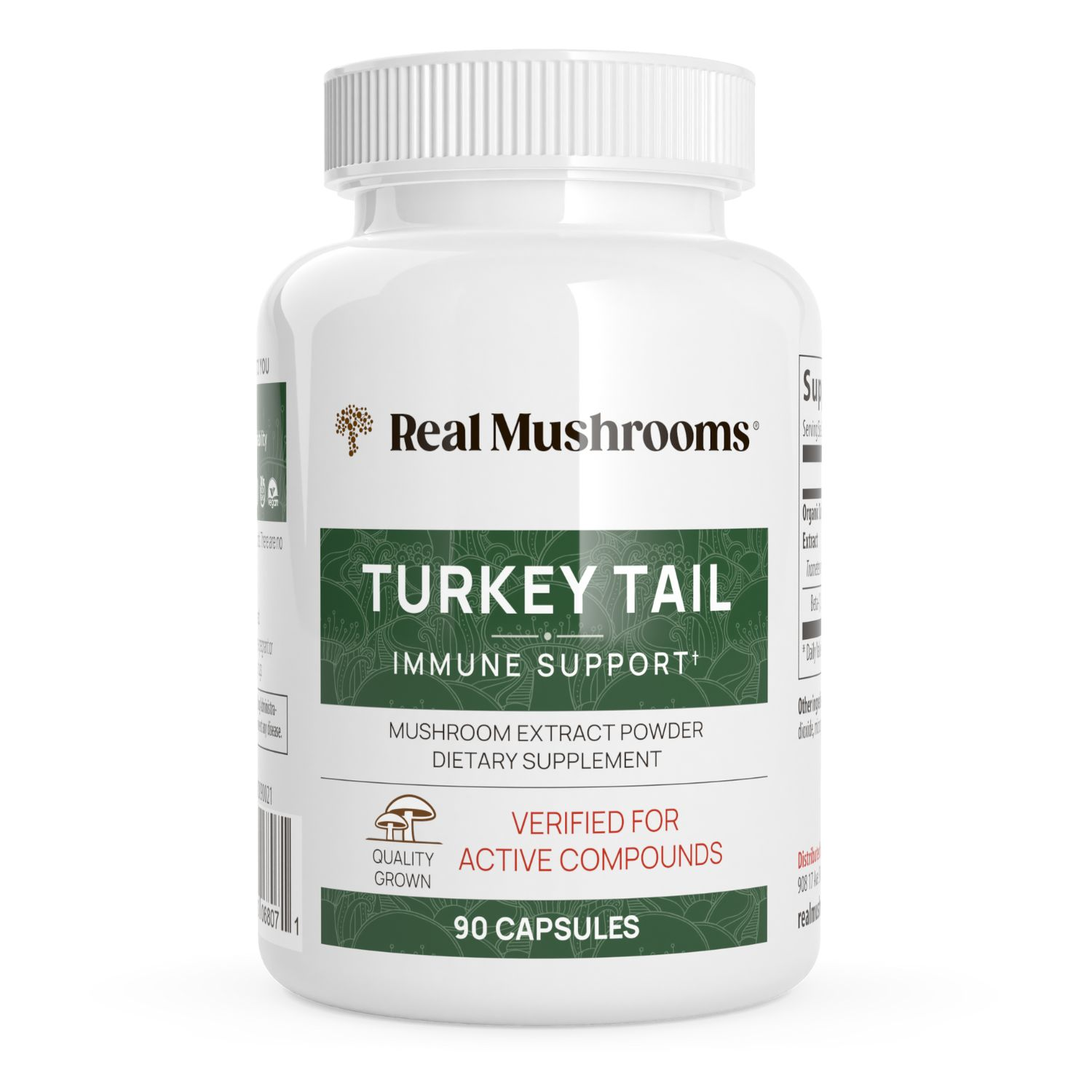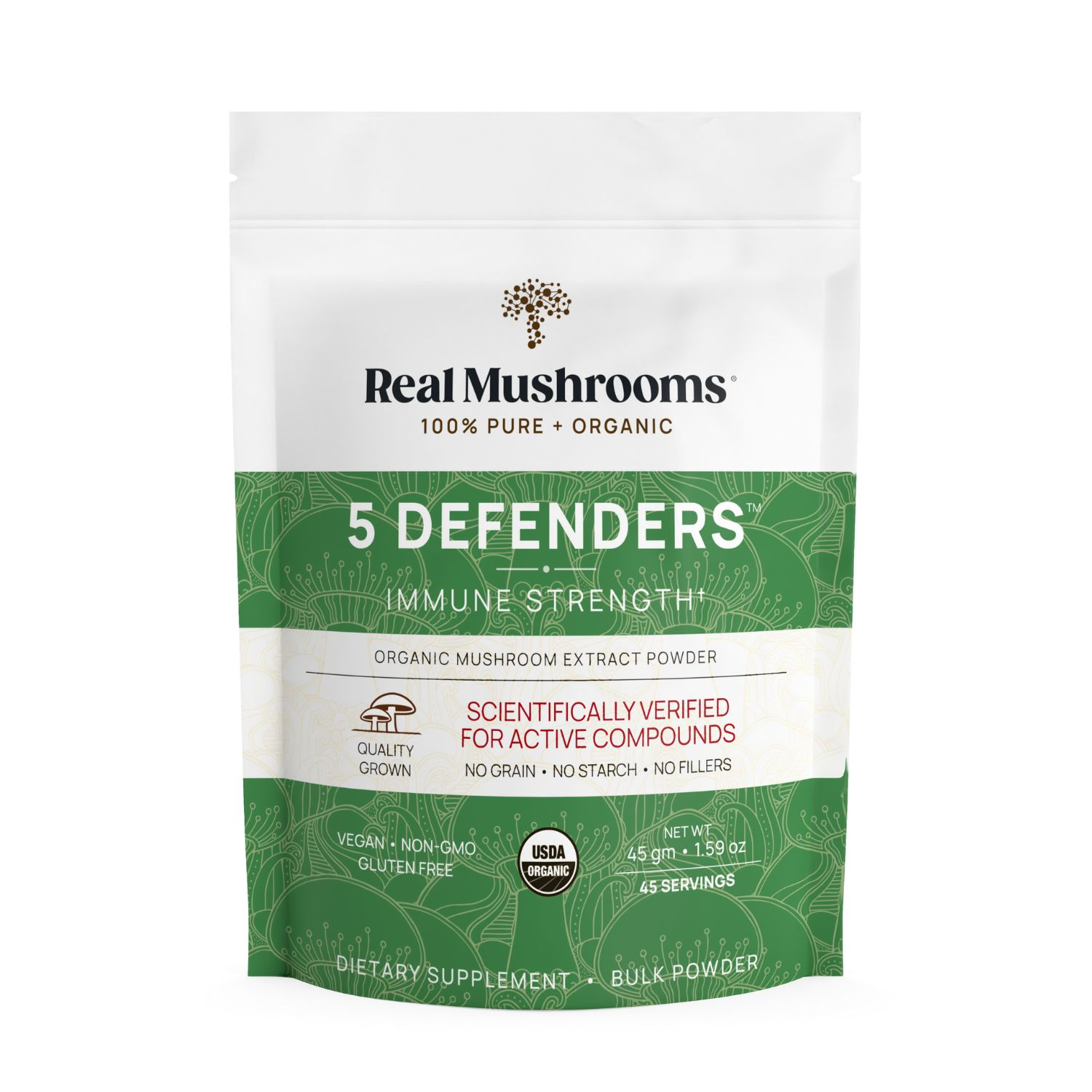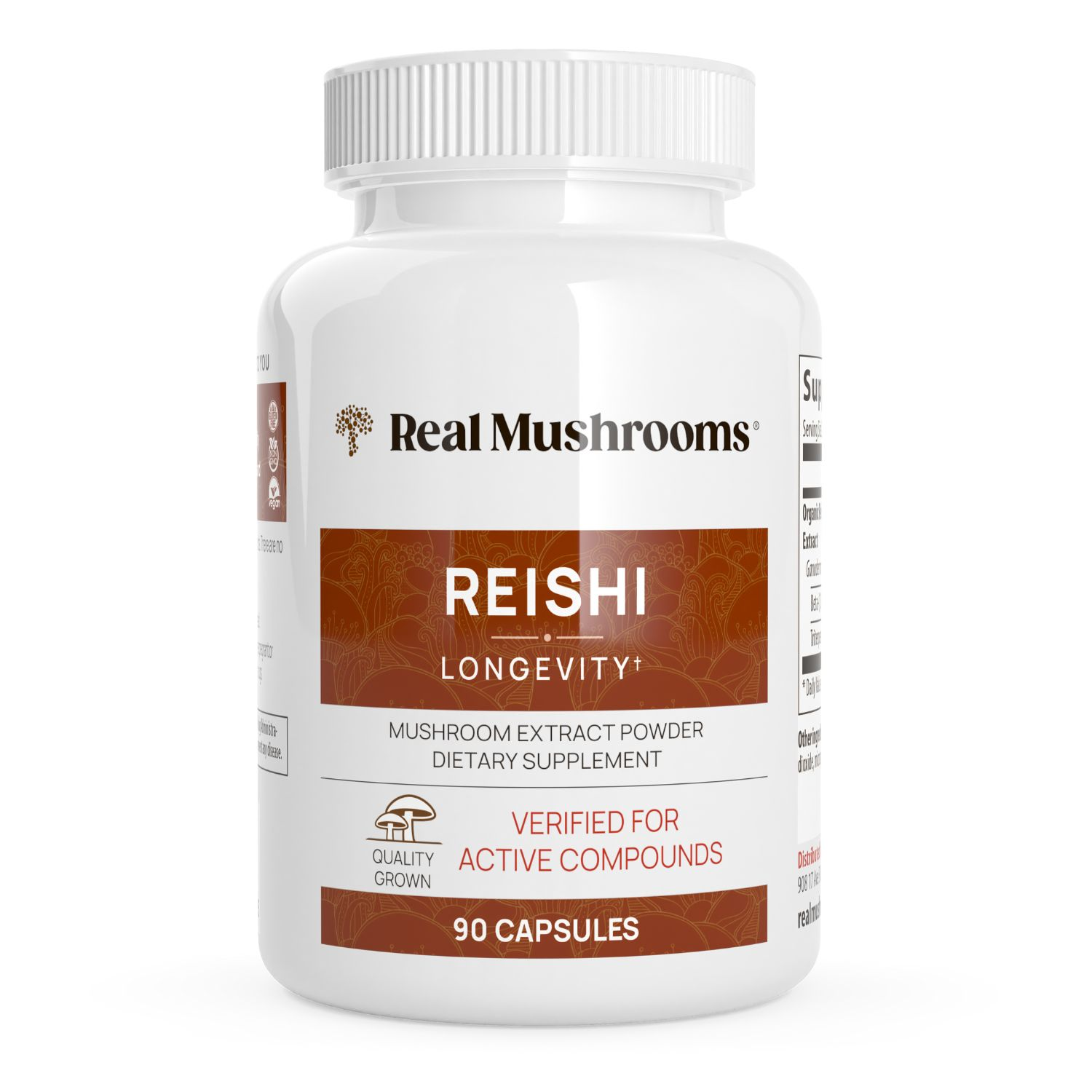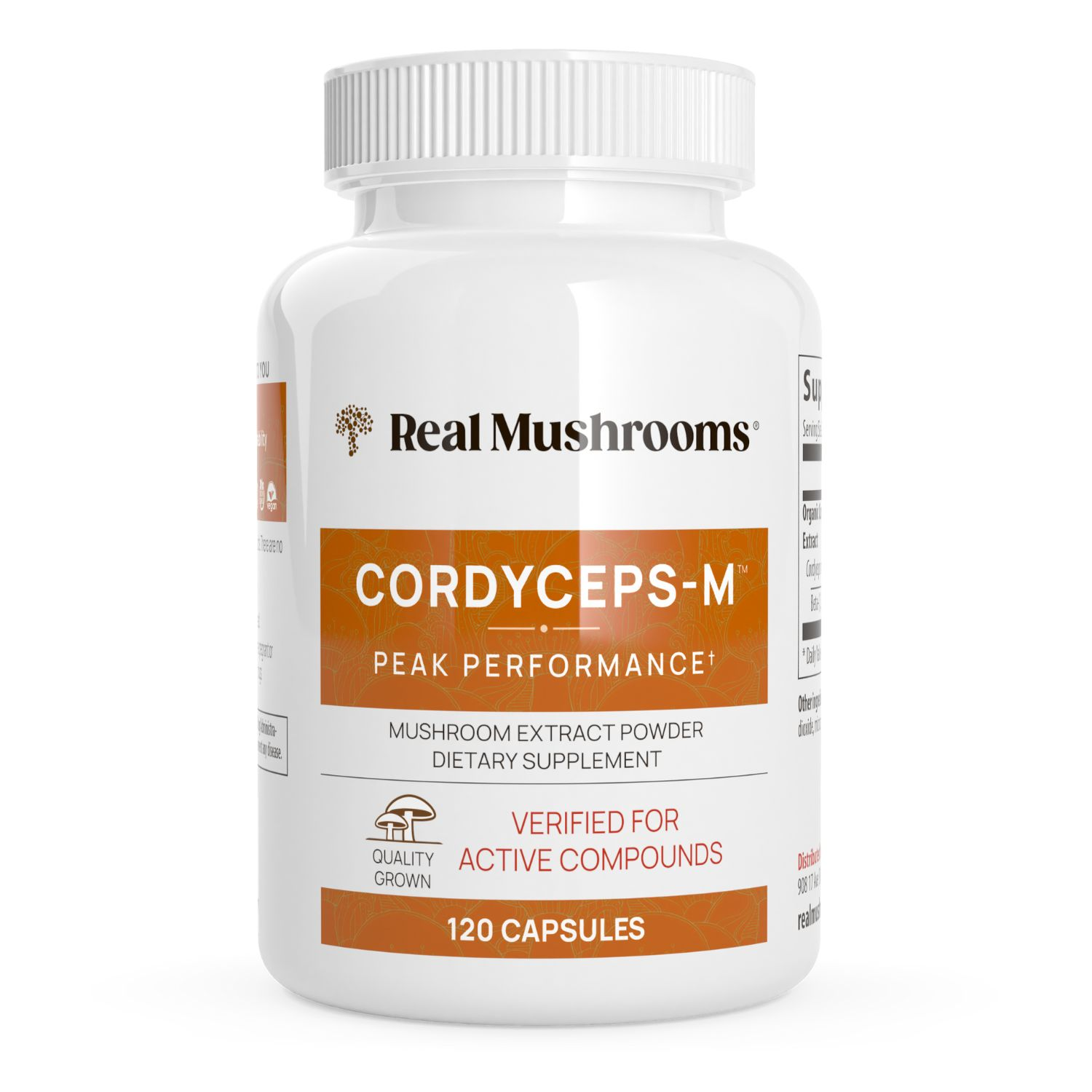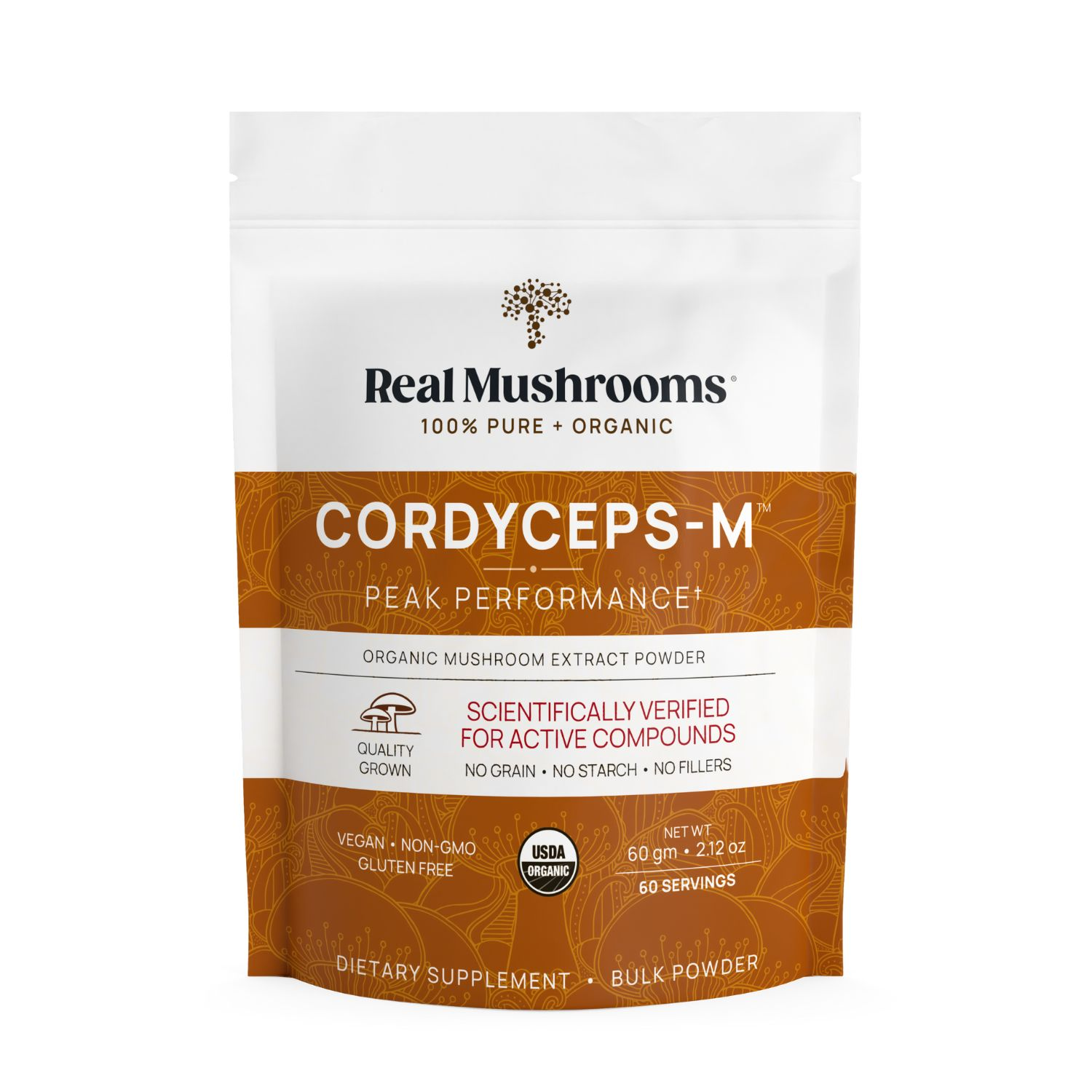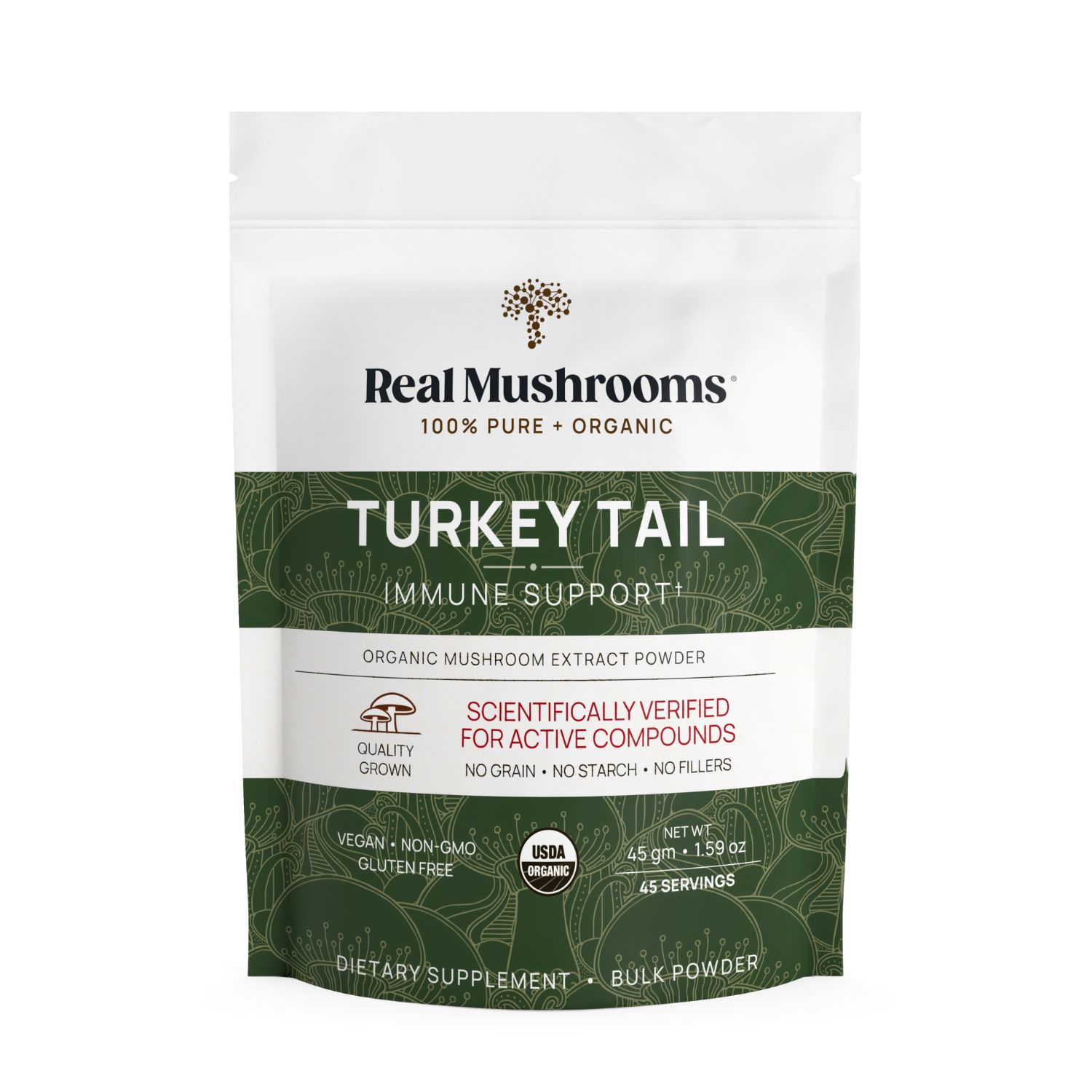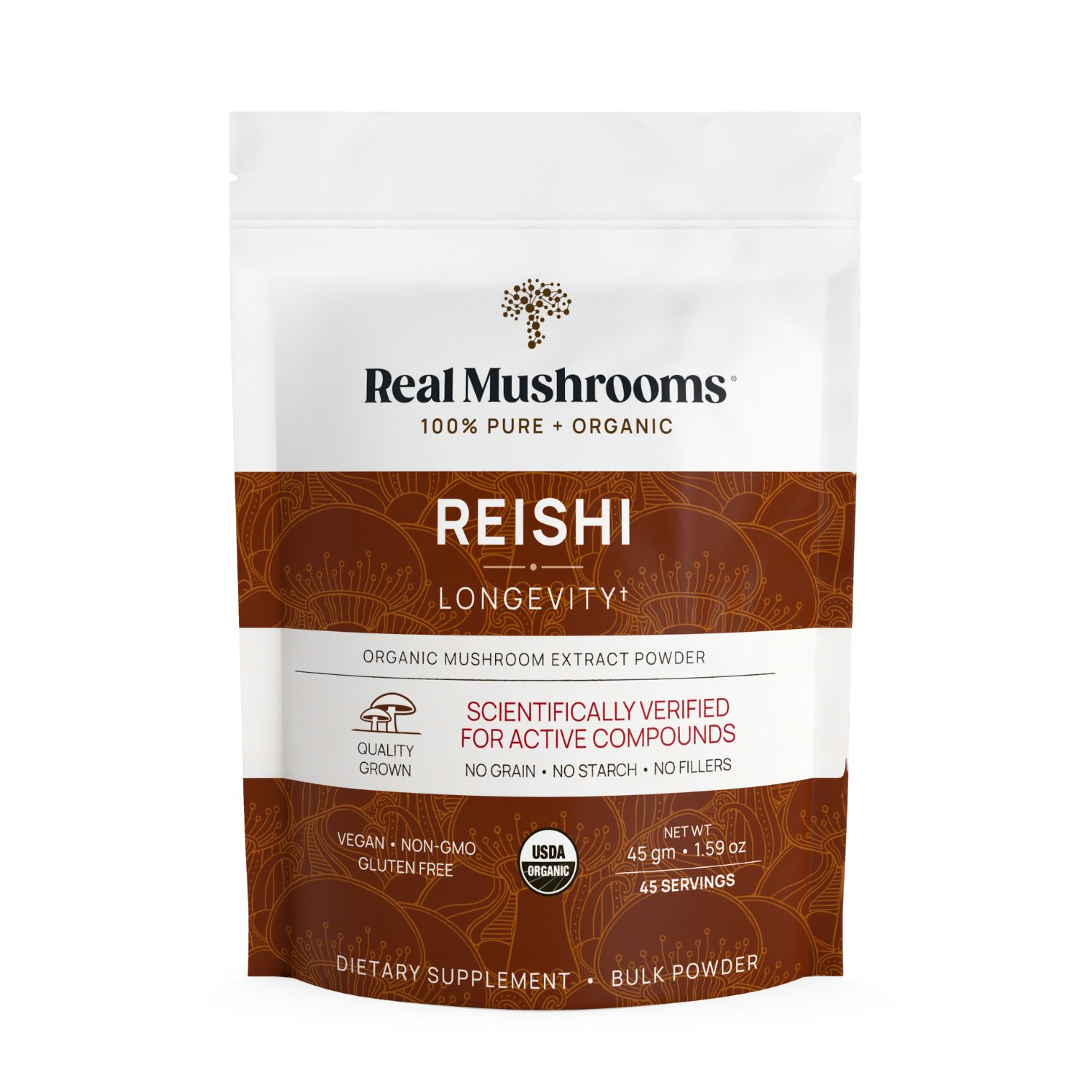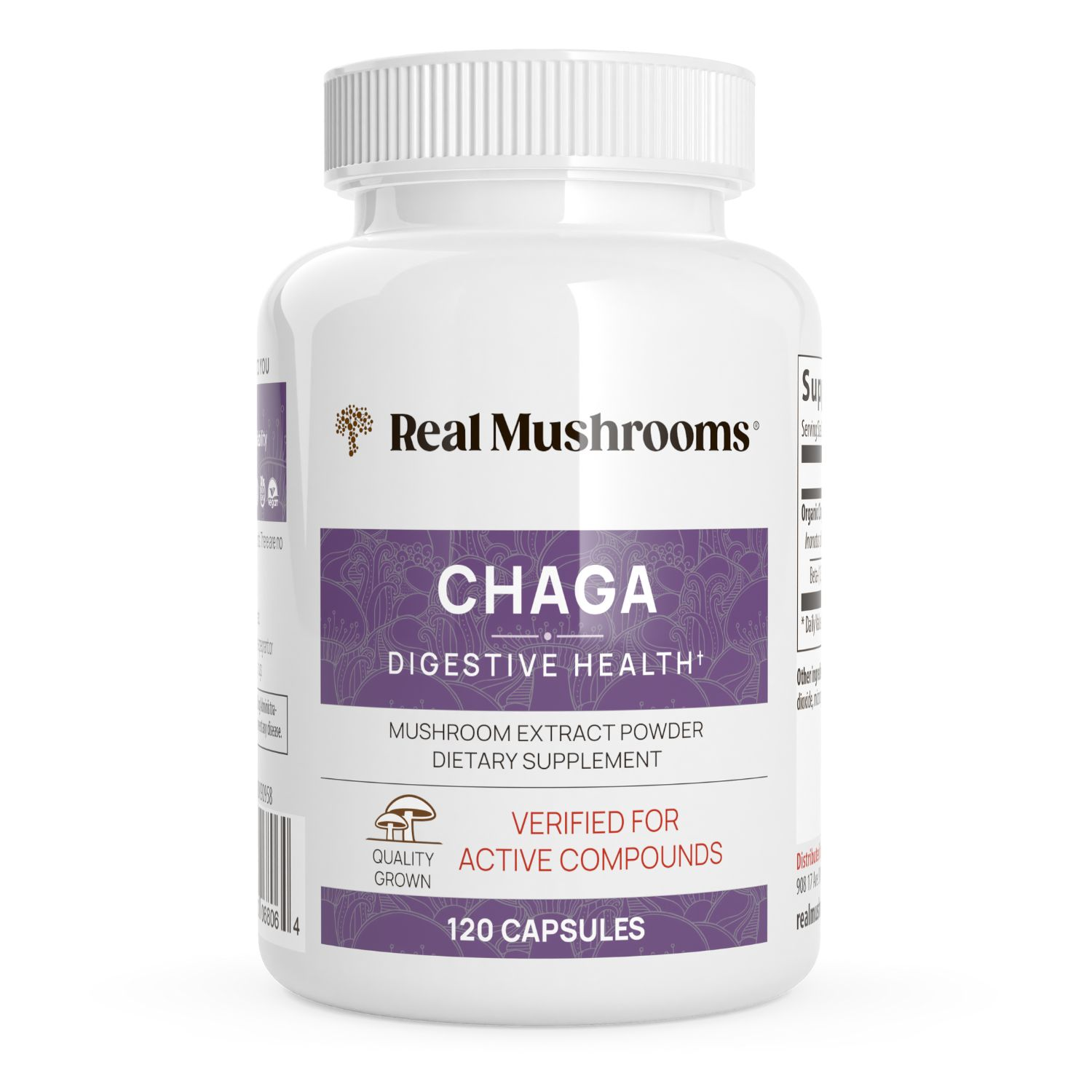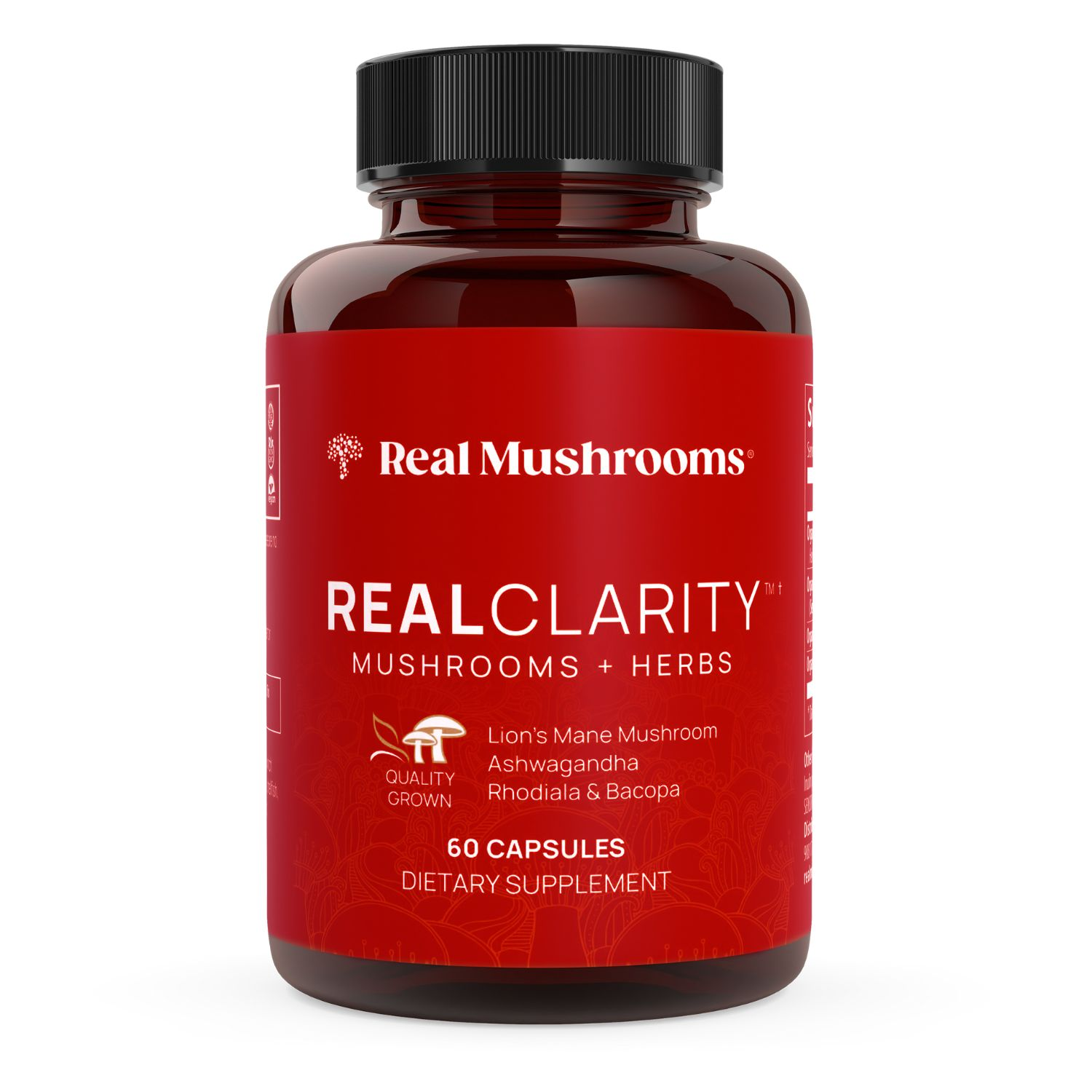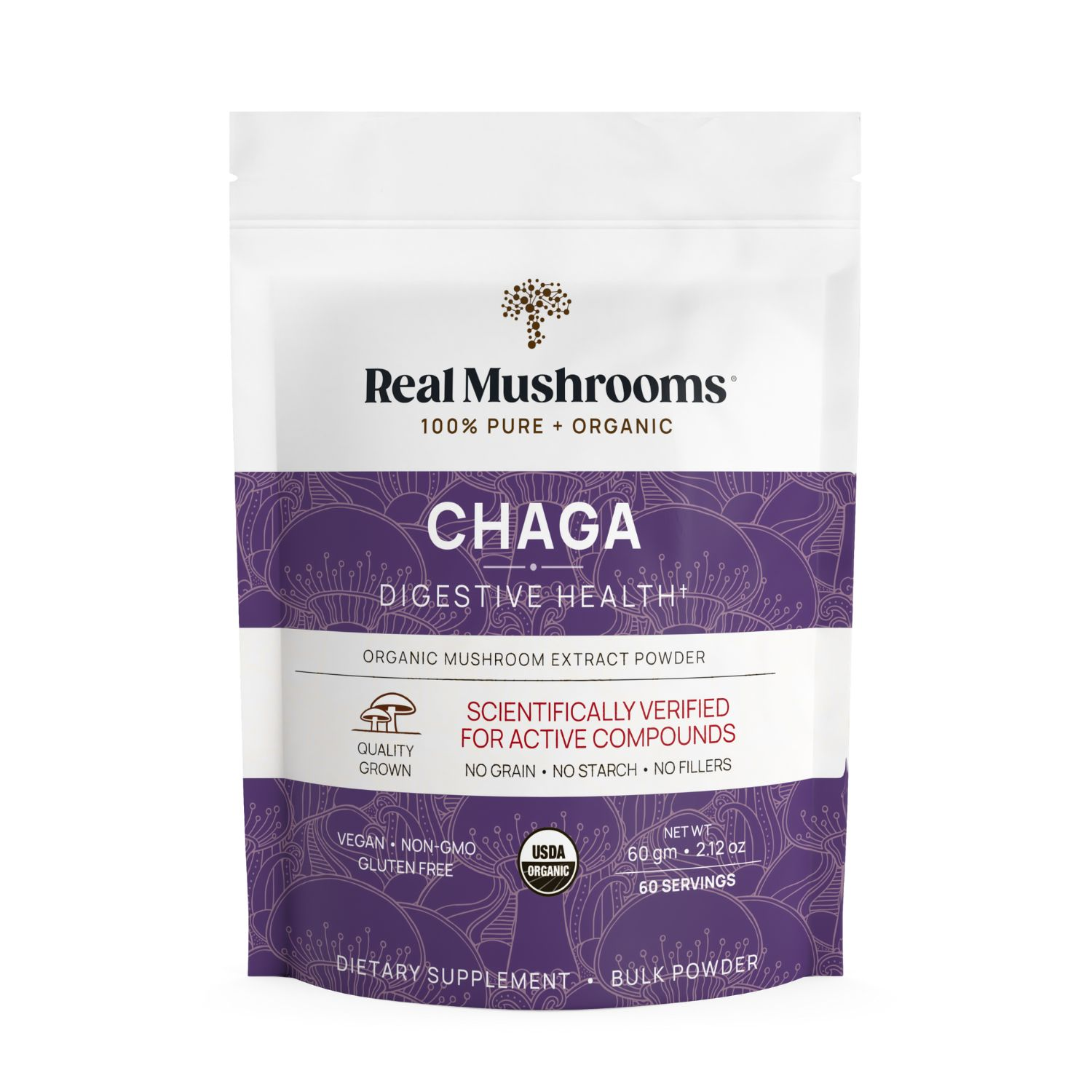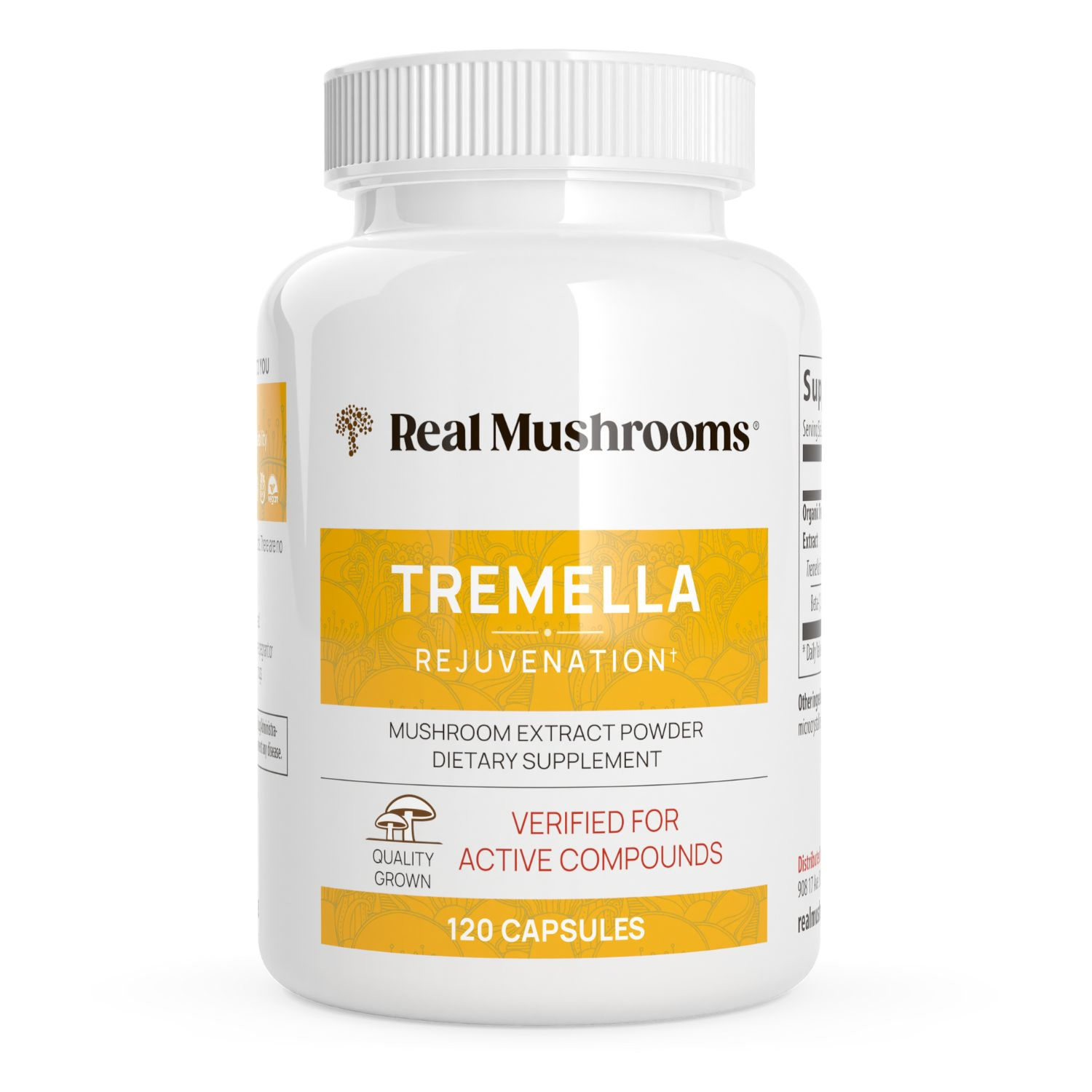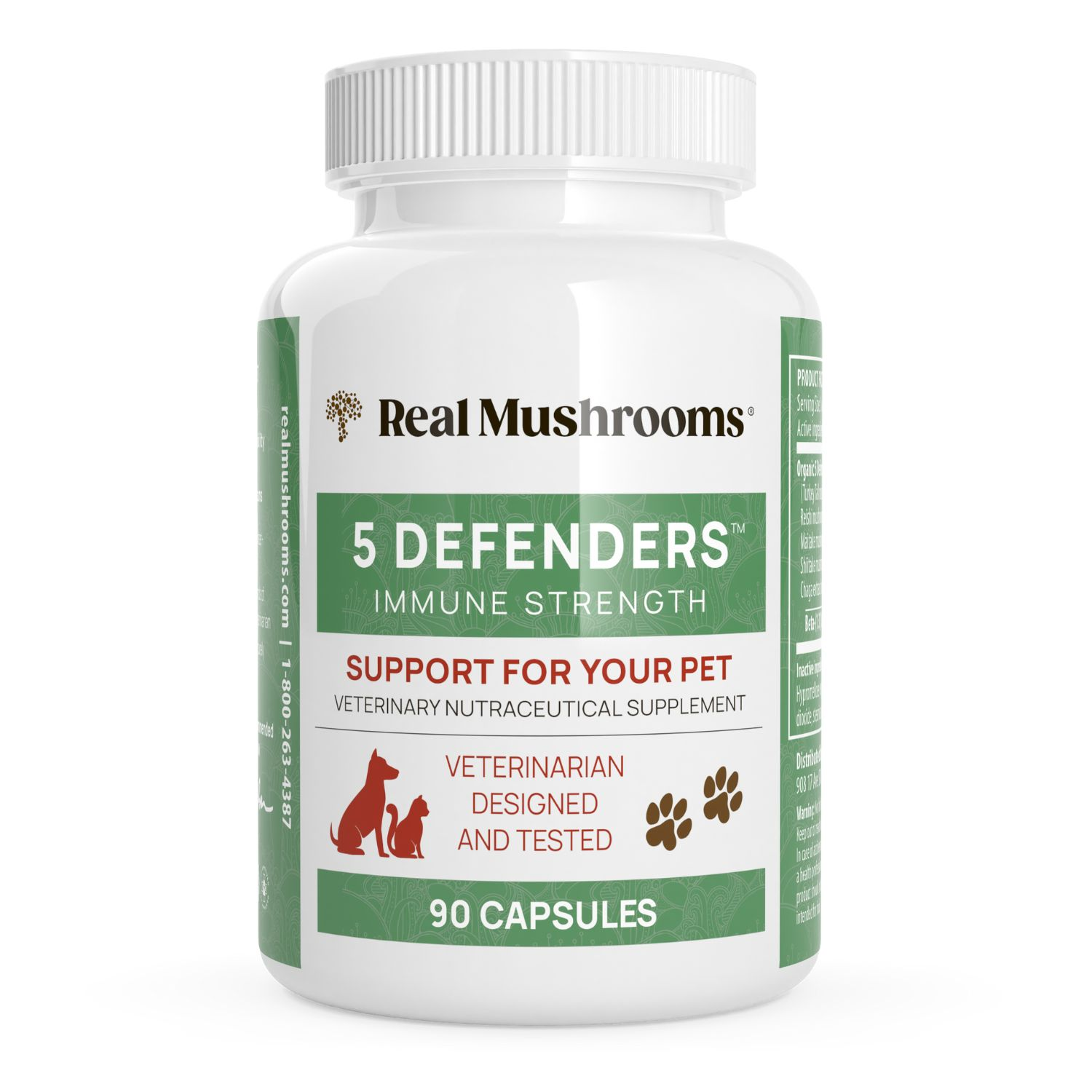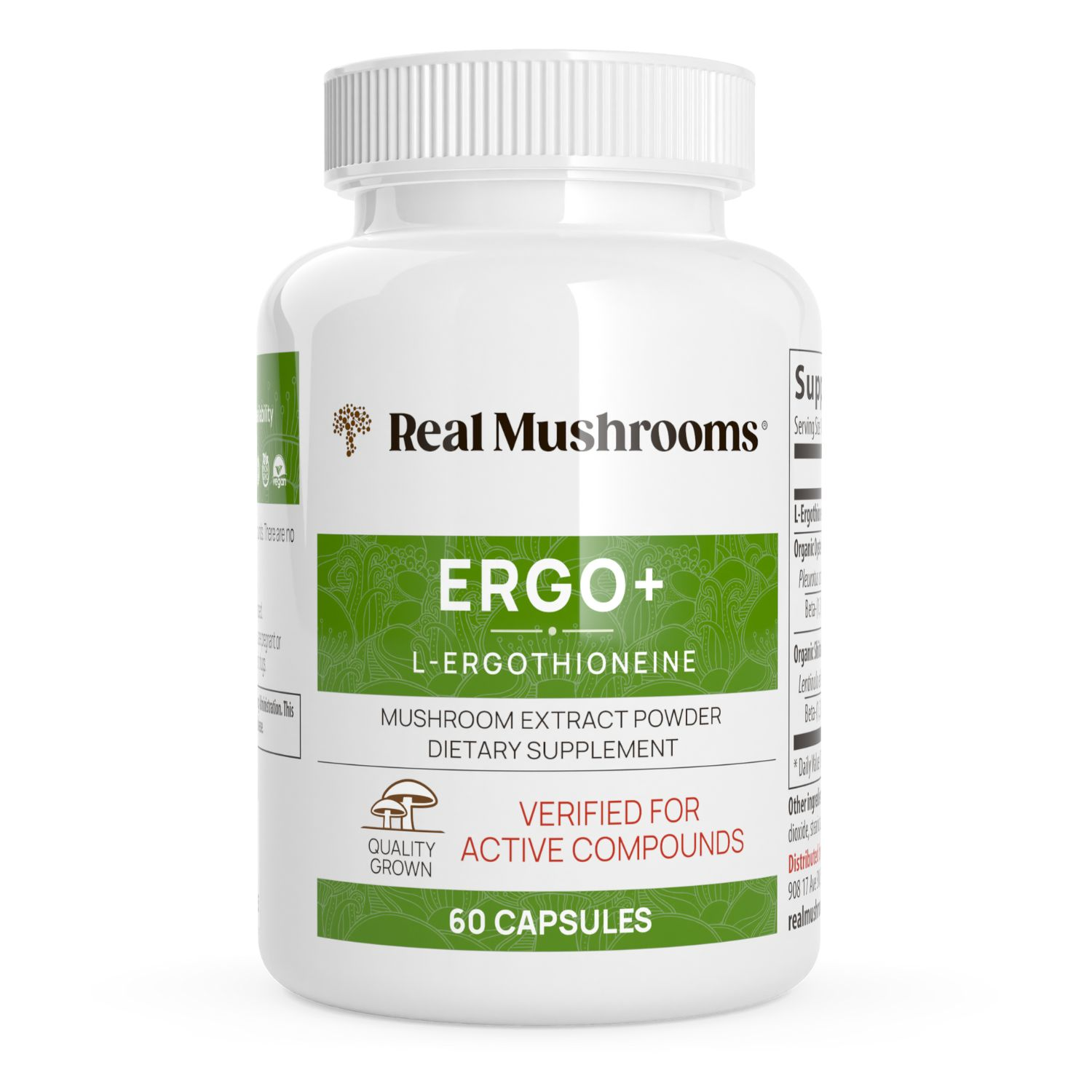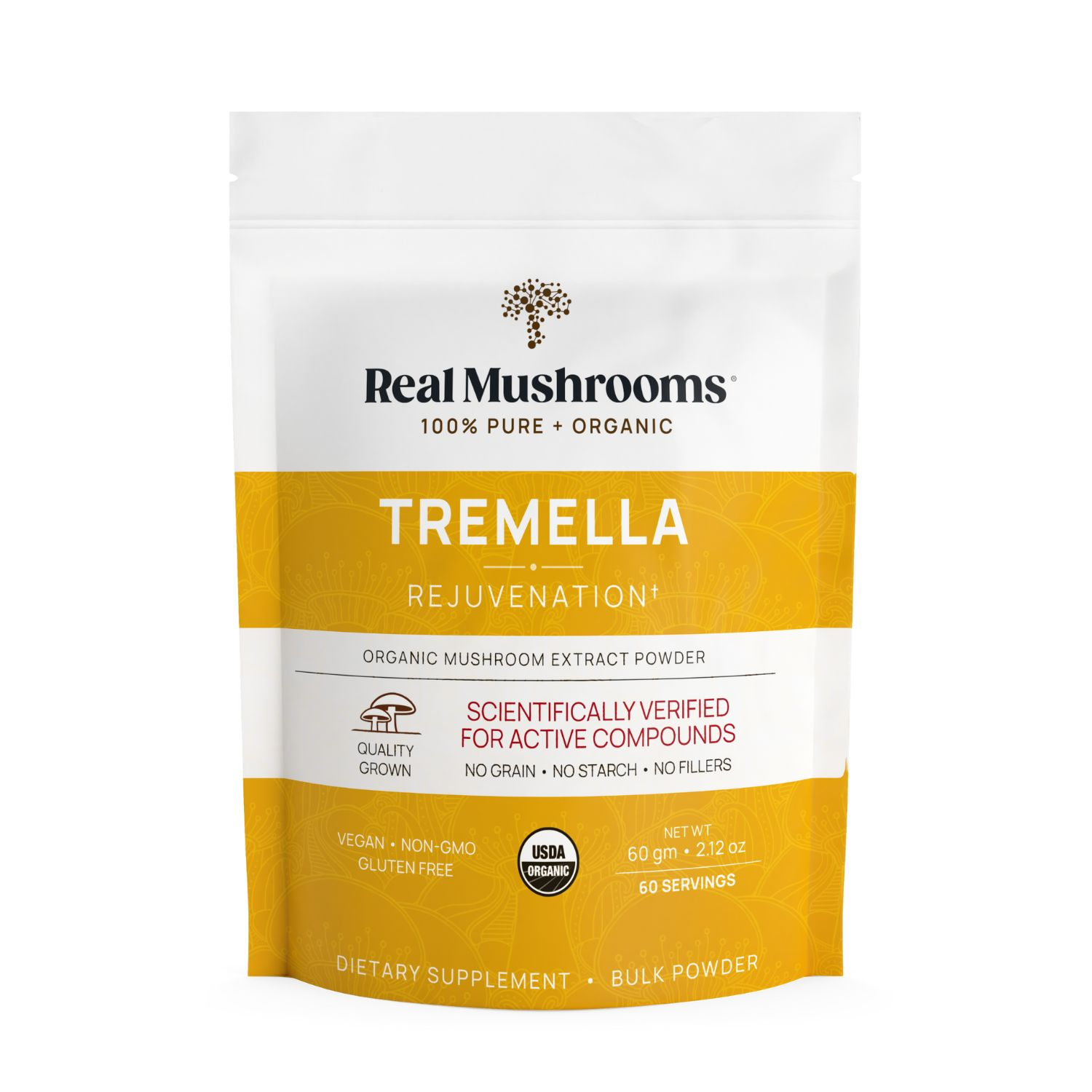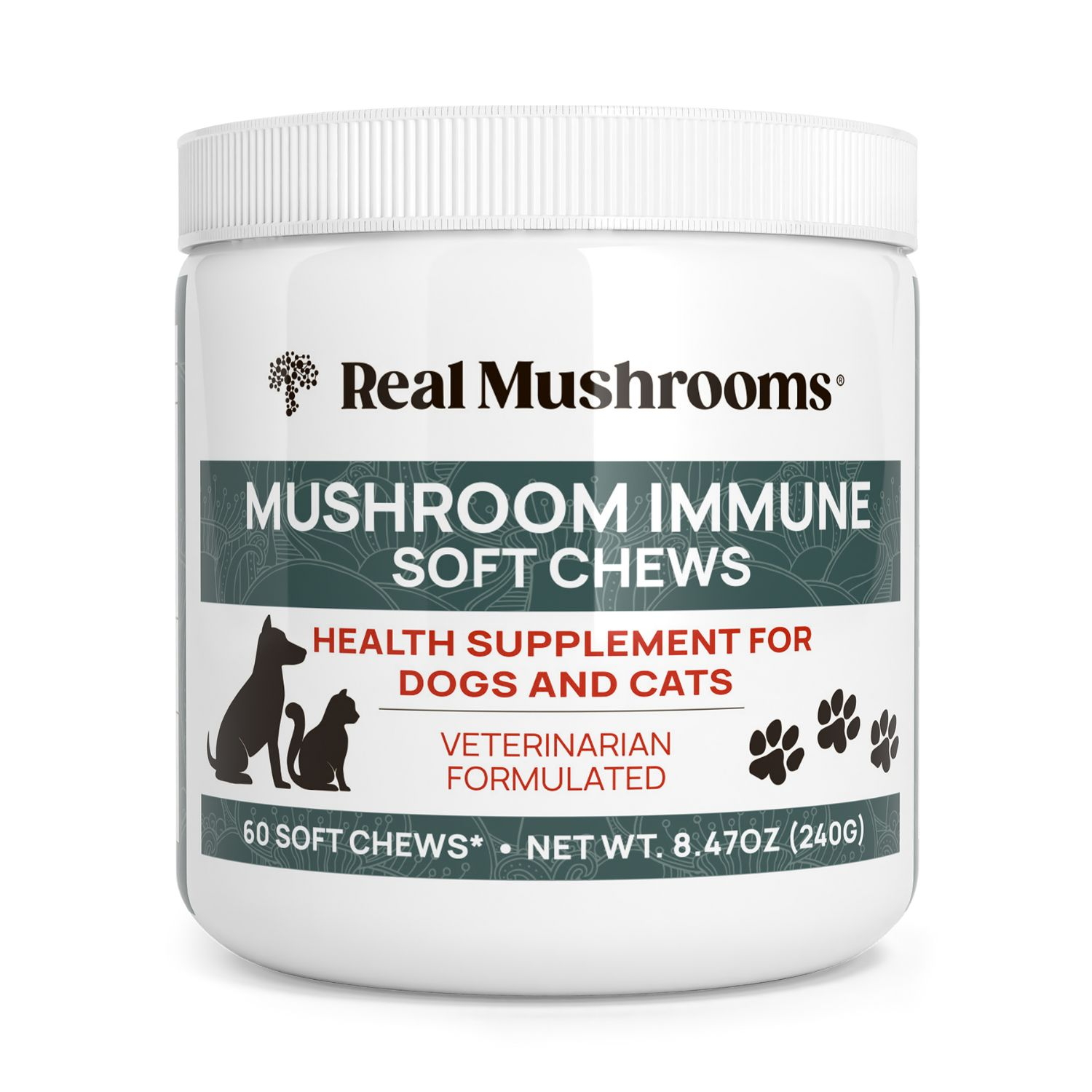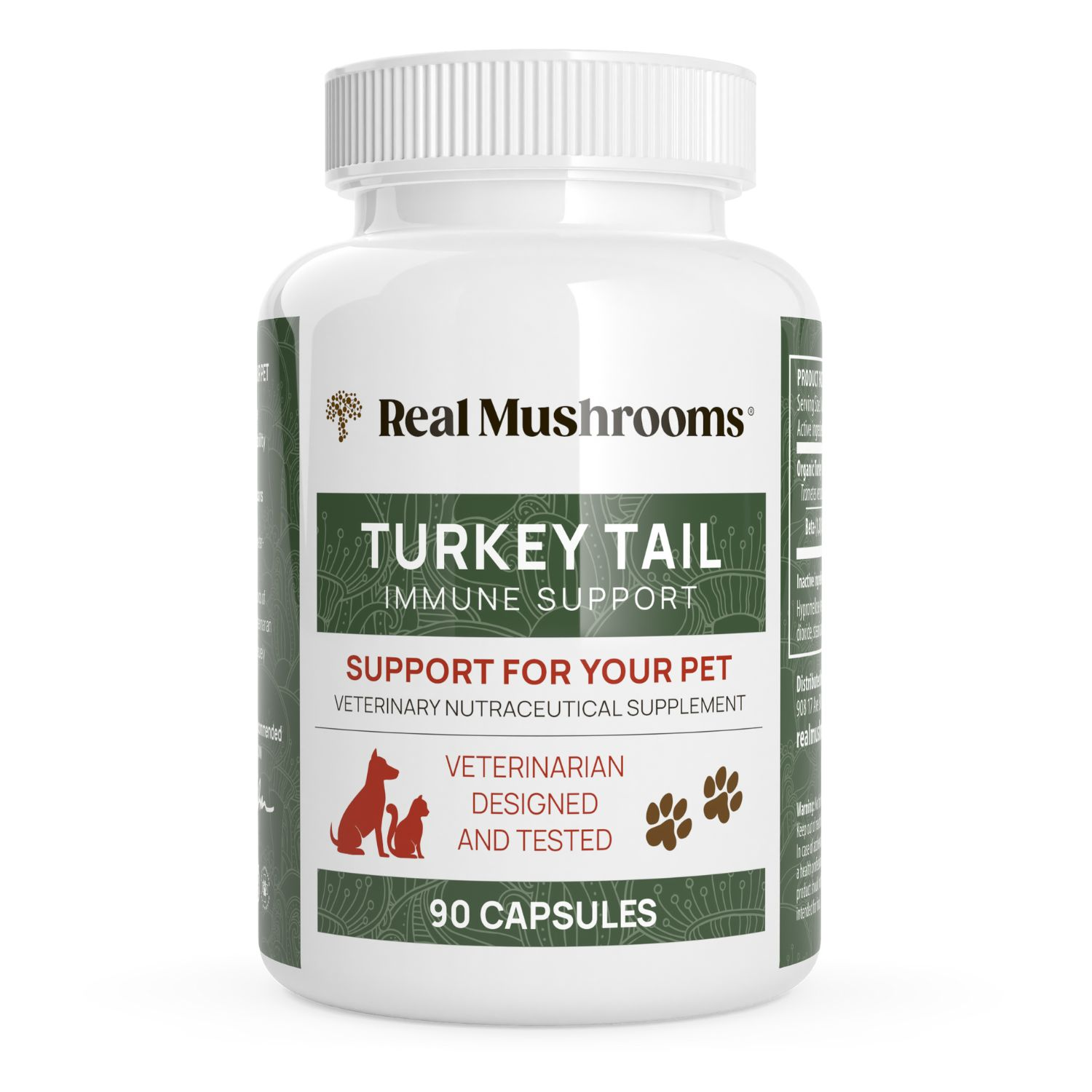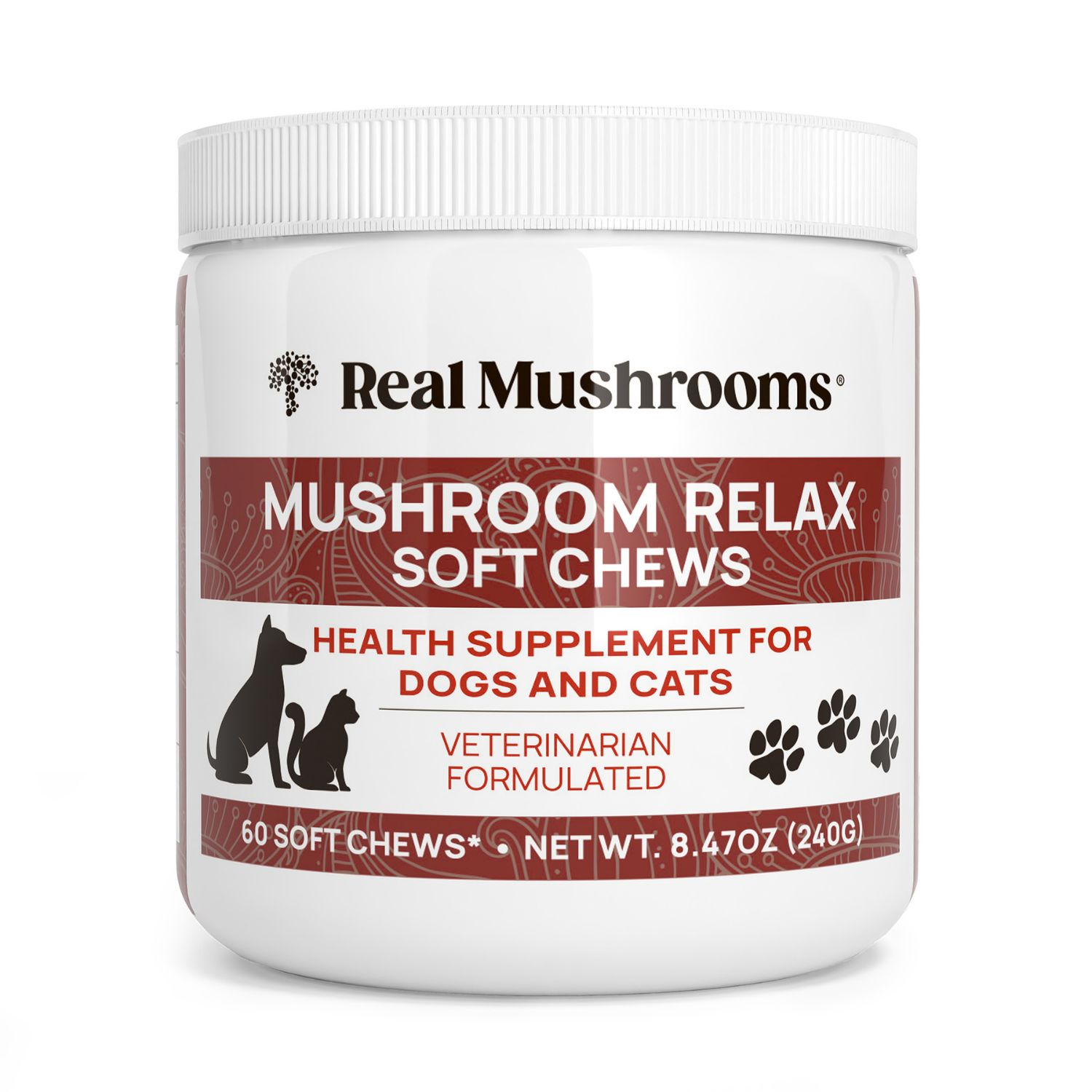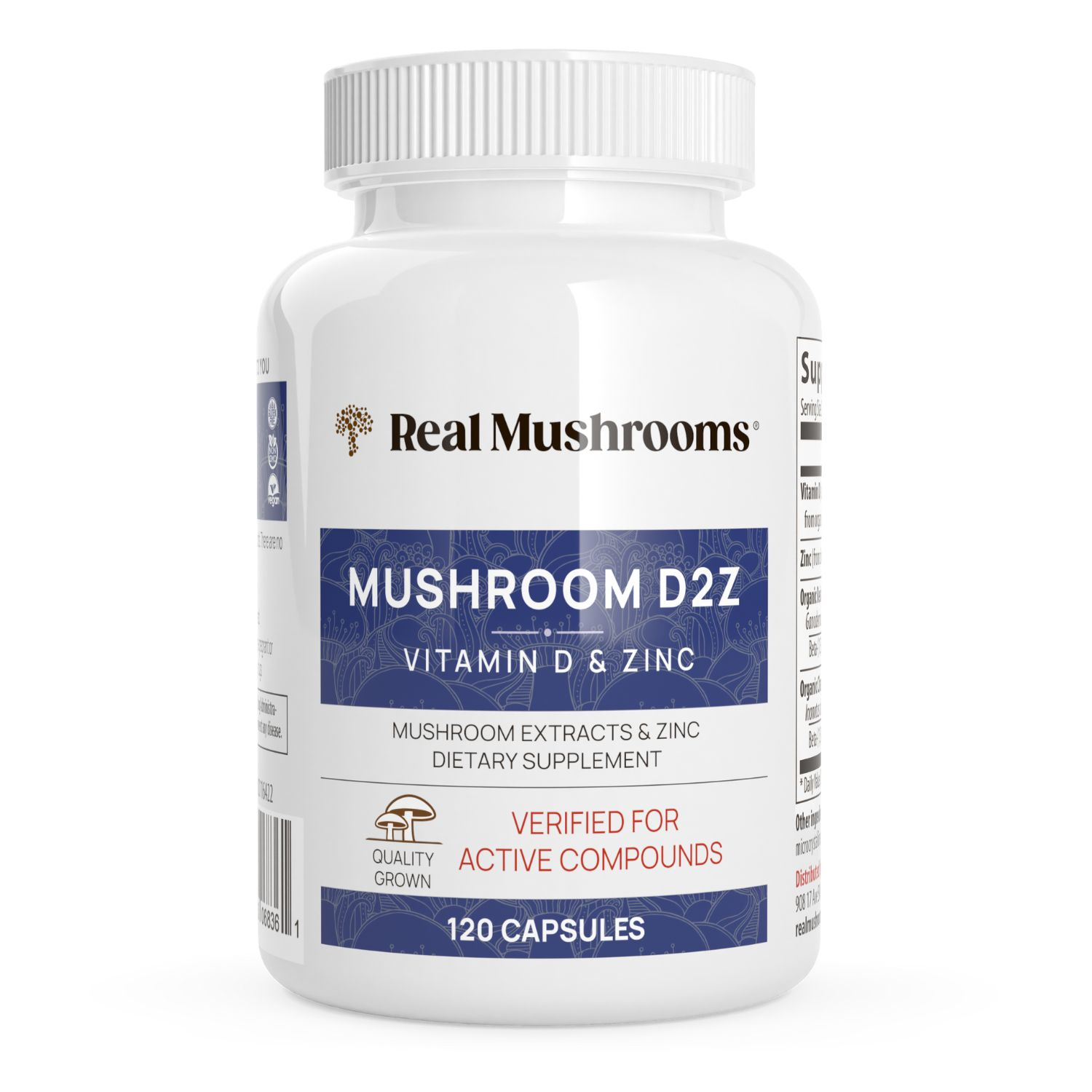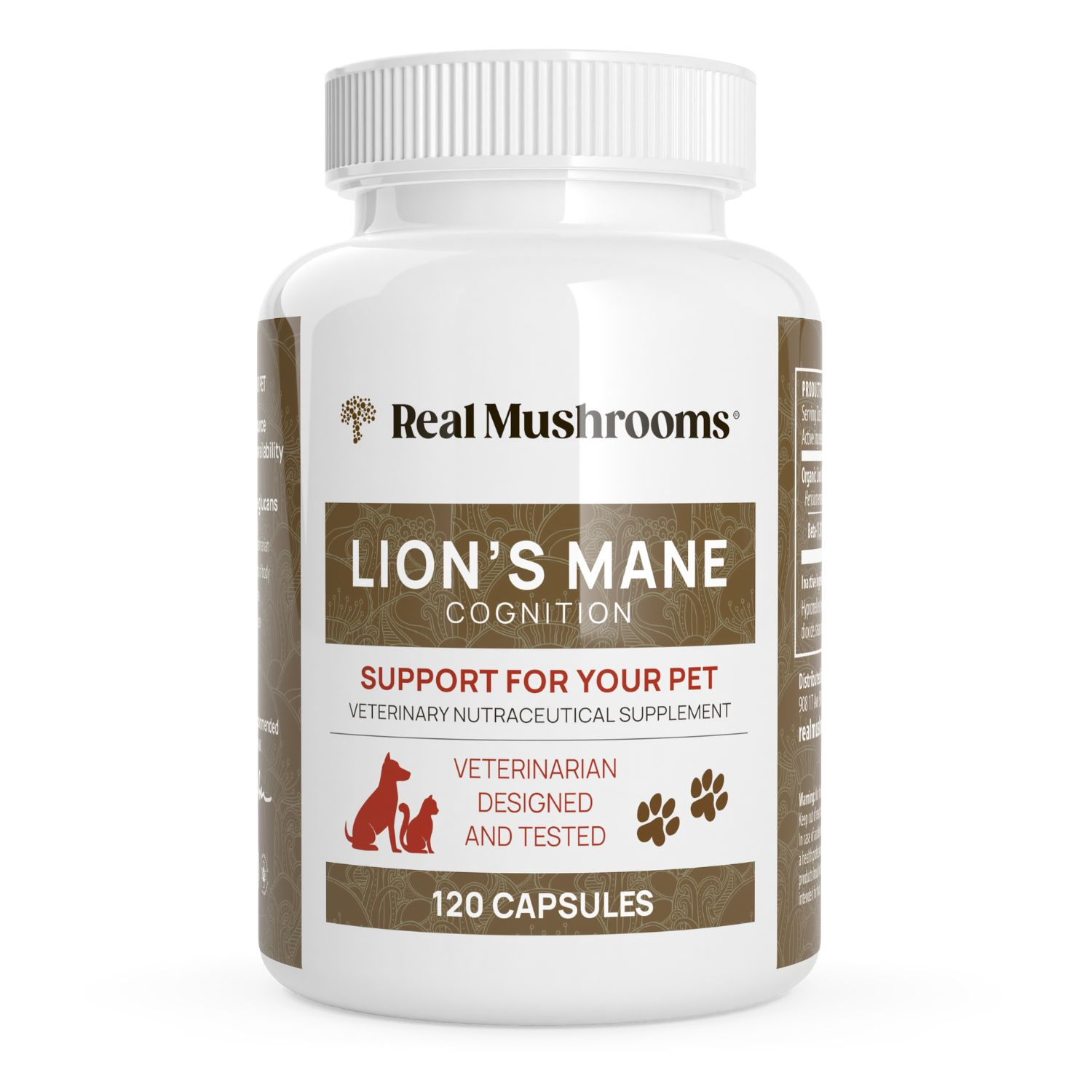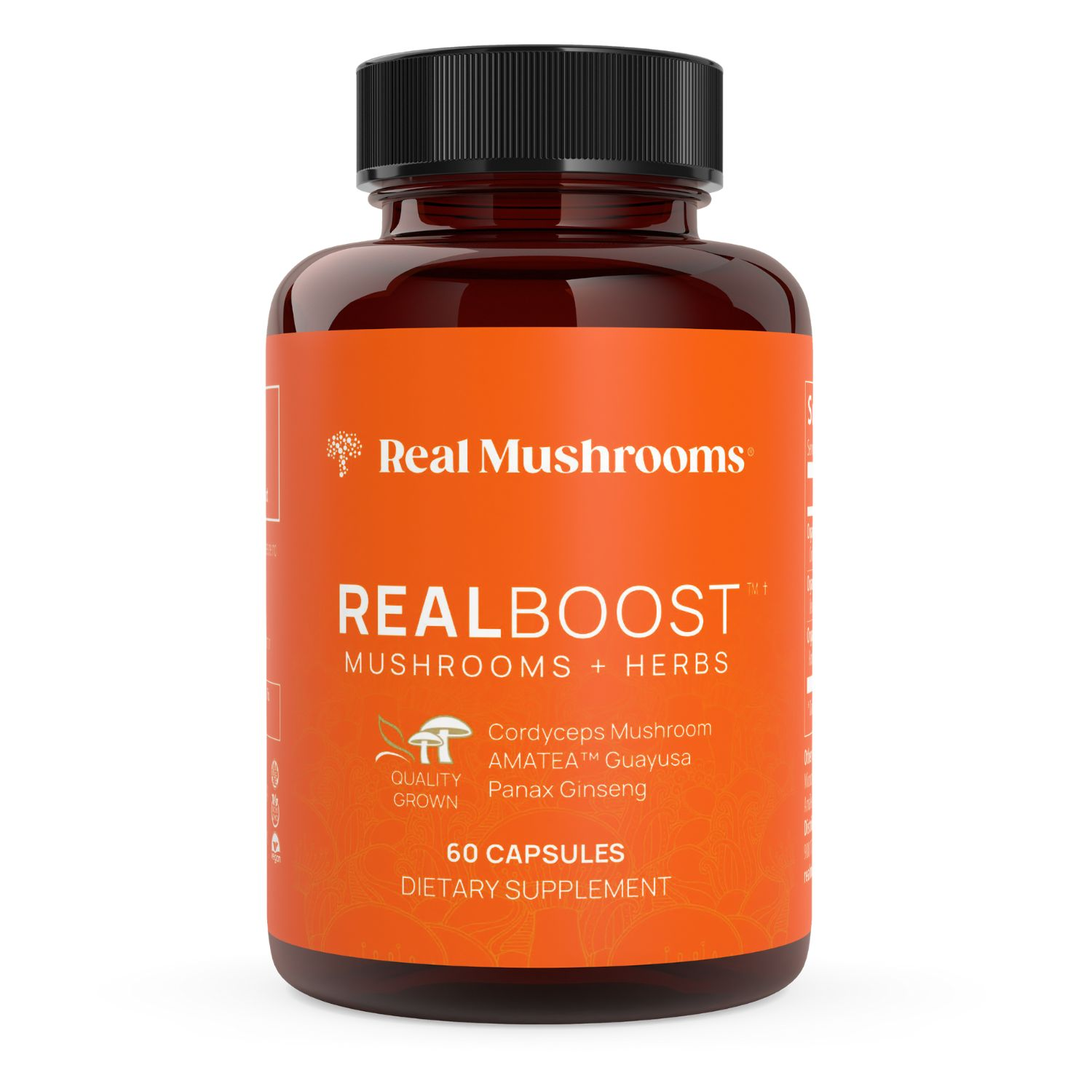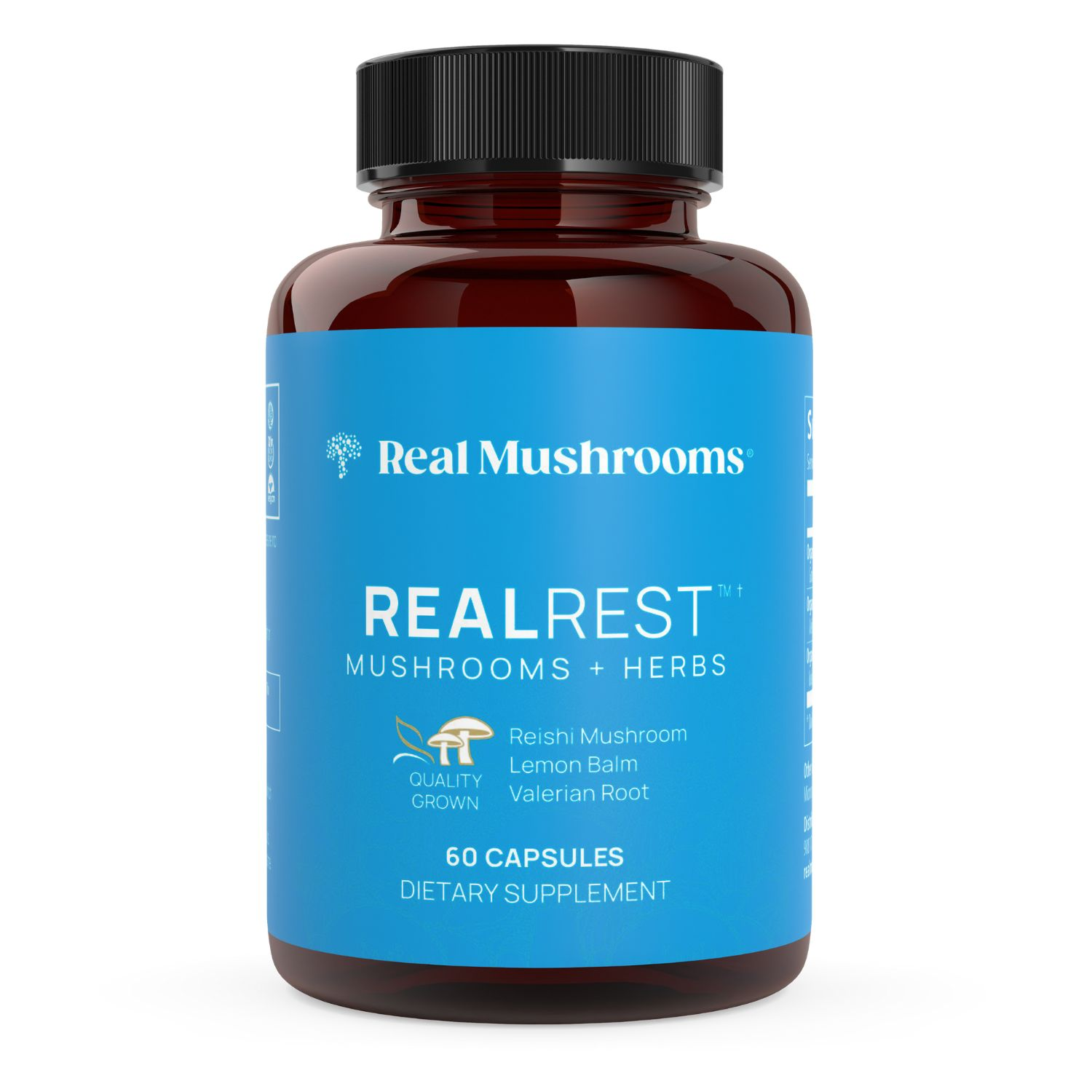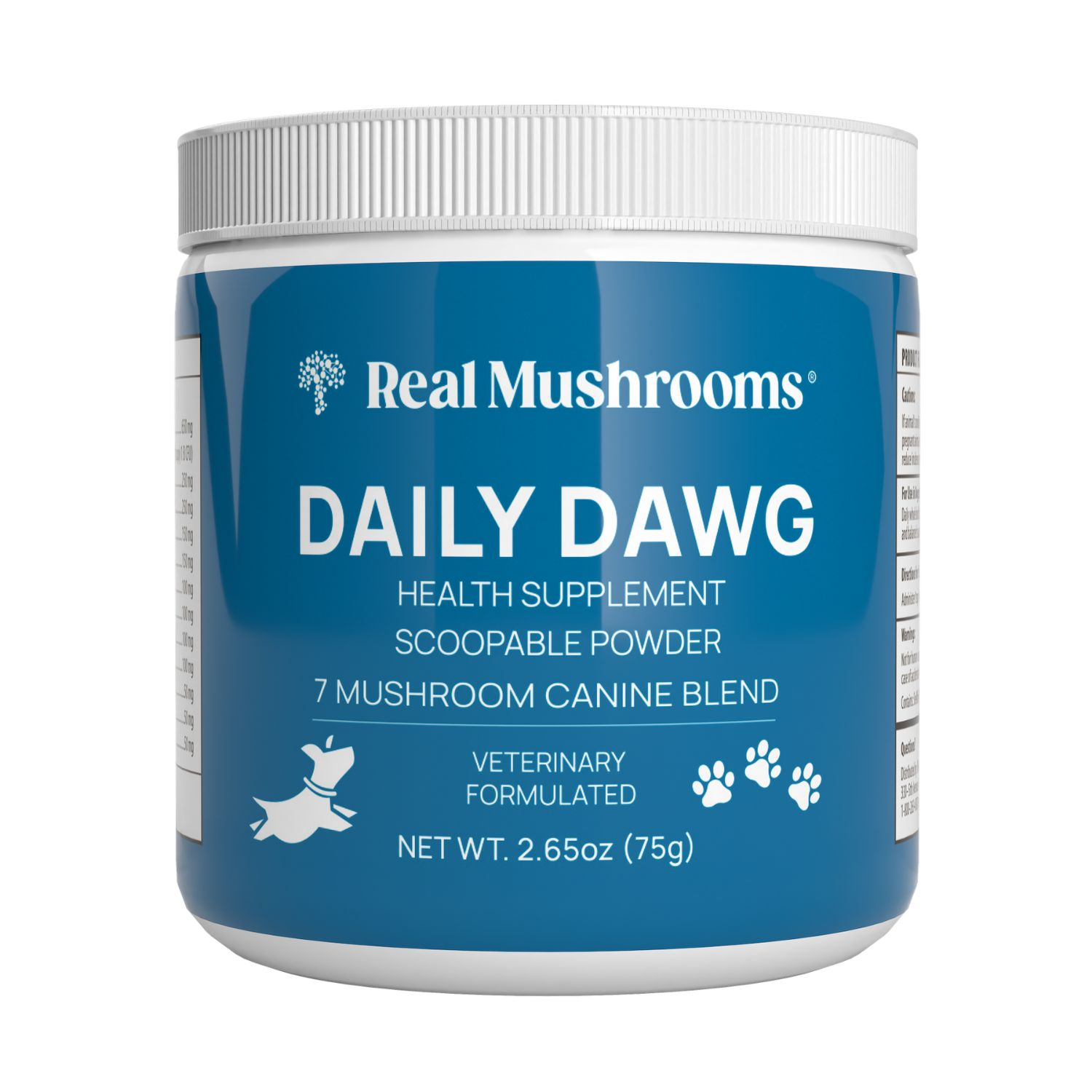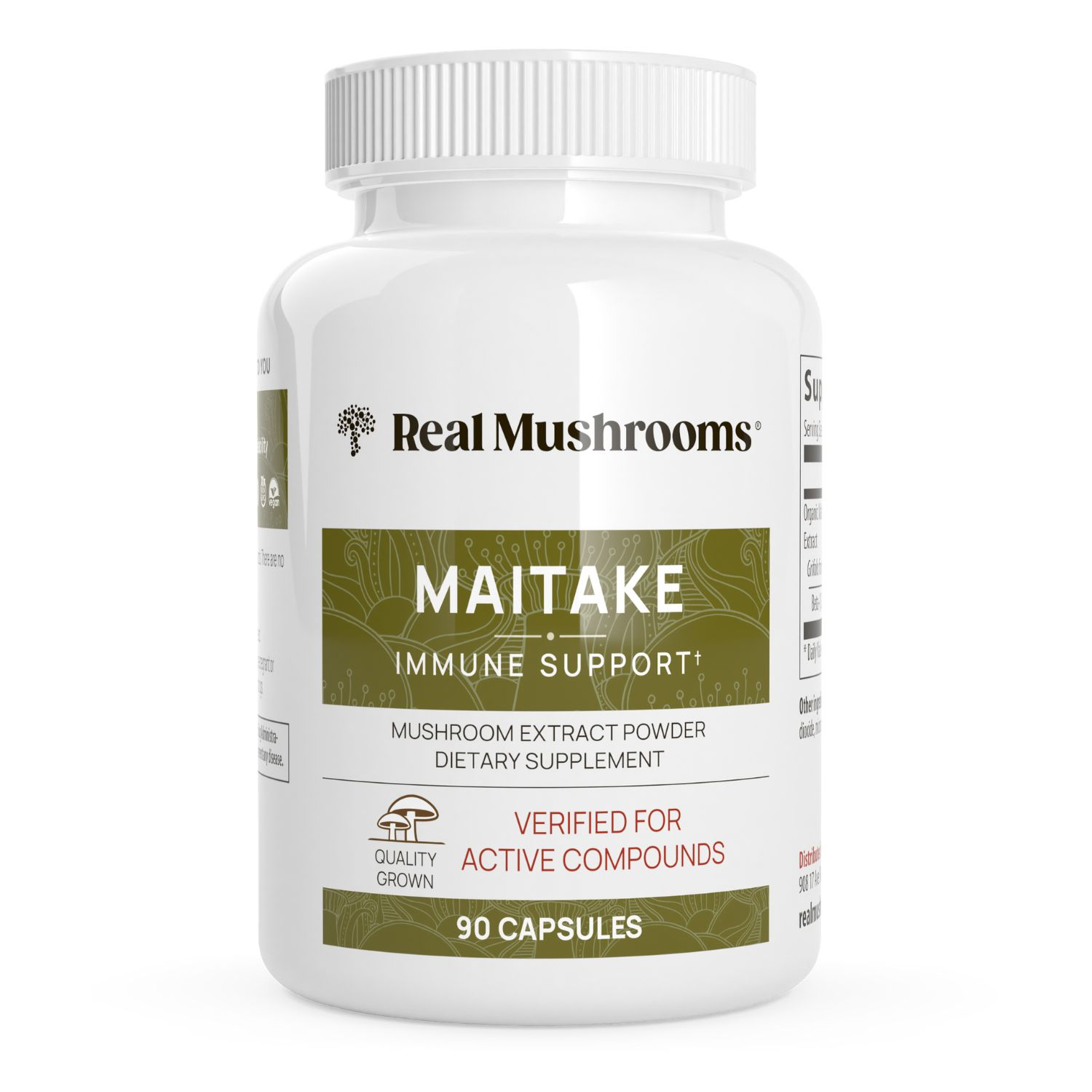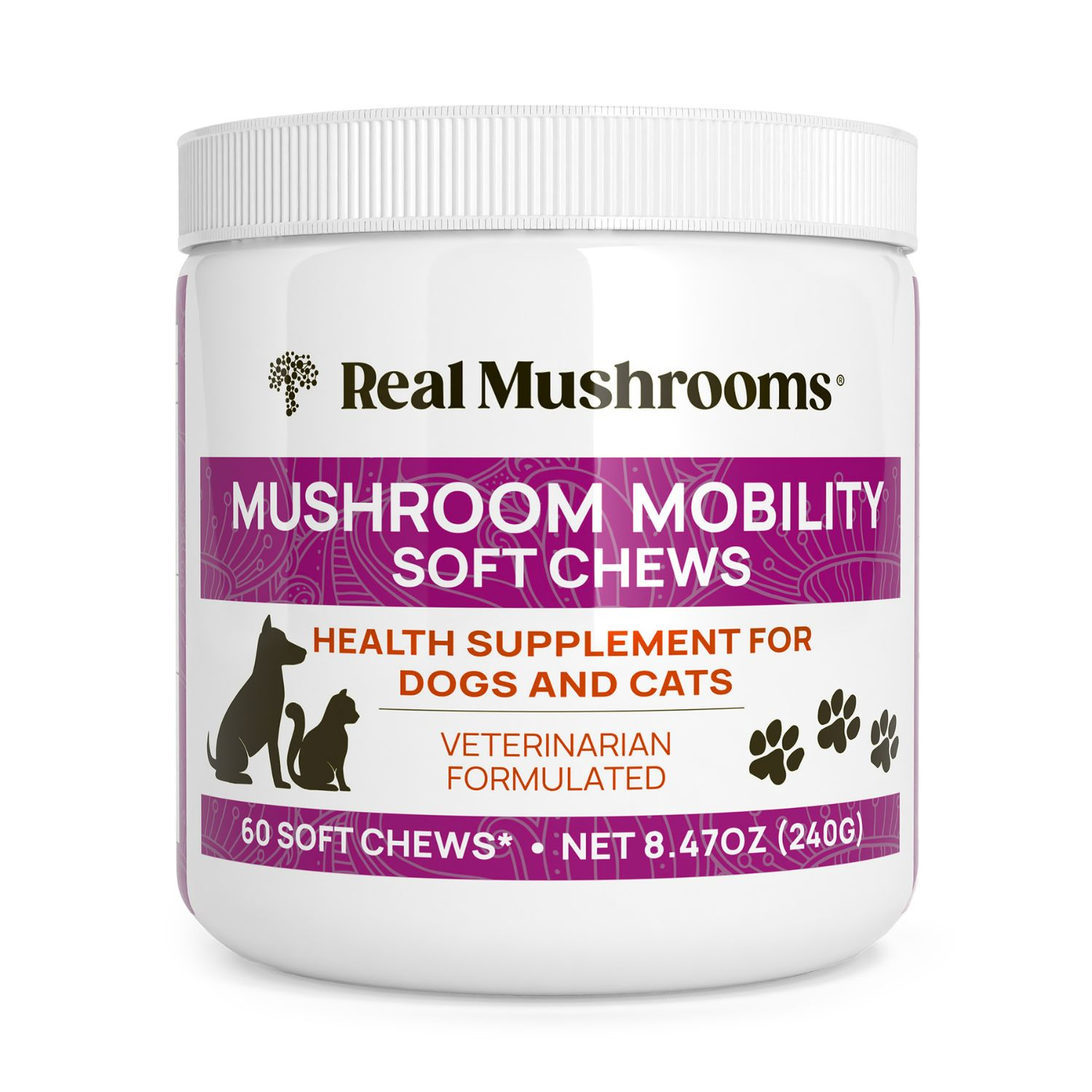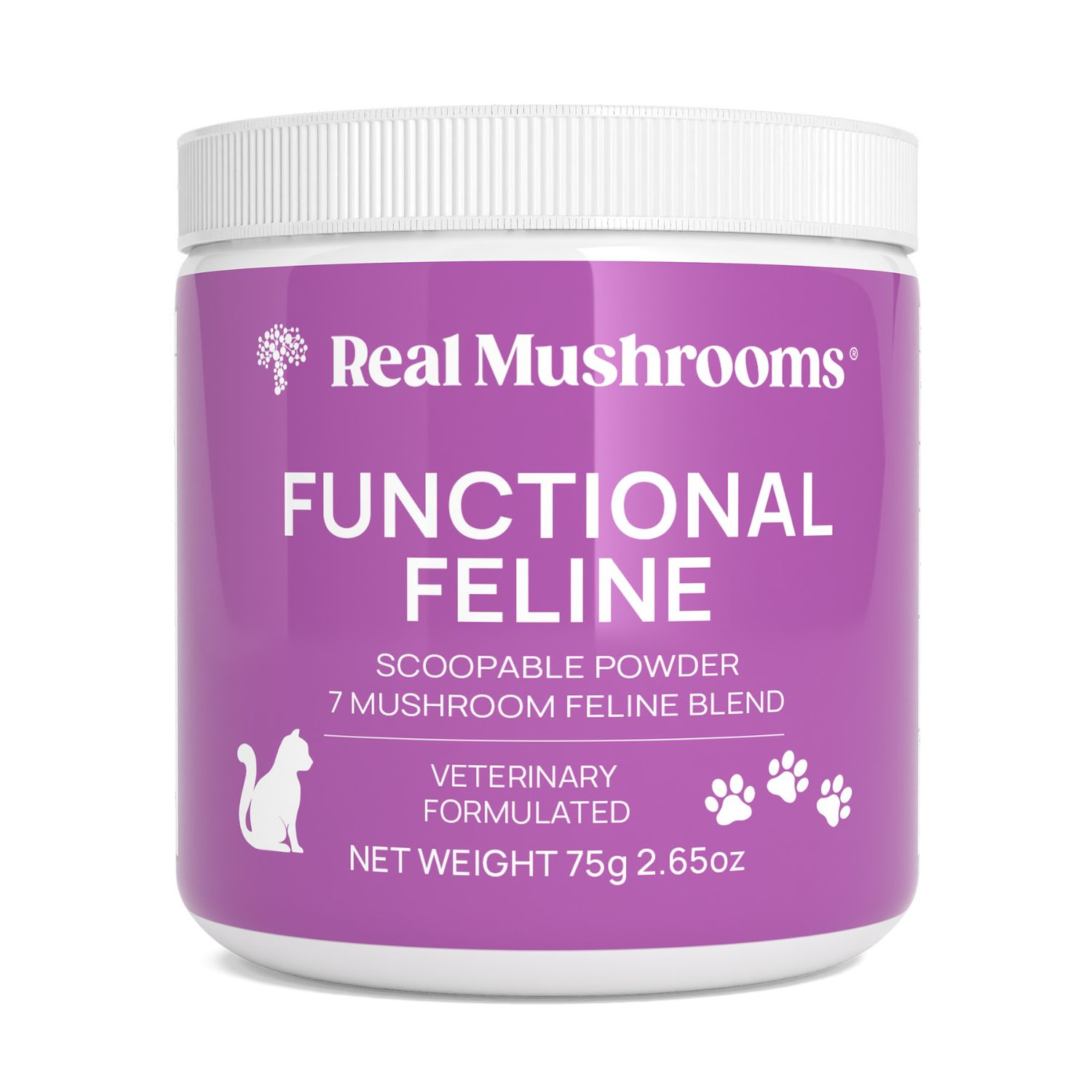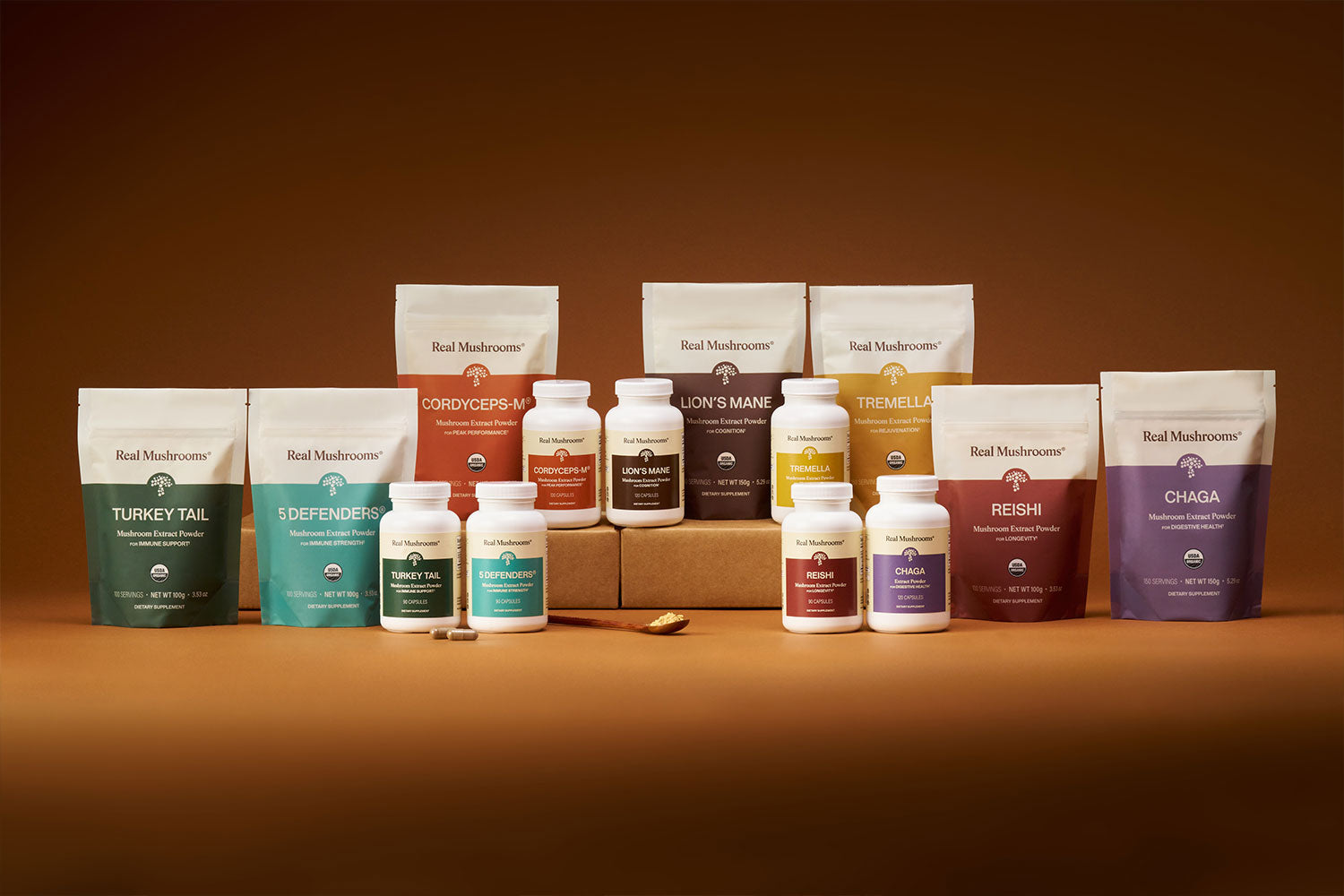A Look at the Powerful Benefits of Beta-D-Glucan
17 minute read

When it comes to incorporating medical mushrooms into your daily regimen, beta-d-glucan should be at the forefront of your mind. And that’s because mounting scientific evidence and research are undeniably in support of this powerful polysaccharide. In fact, there are over 80 positive clinical studies supporting the use of beta-d-glucans. Some researchers are suggesting that it's not if but when these compounds will be incorporated into pharmaceuticals, much like other dietary fiber-based treatments recognized by the Food and Drug Administration. [48]
But how exactly can beta-d-glucan help you?
We’re going to take a look at what beta-d-glucan is, how it works with your biology – and, more specifically, how it can improve your overall immune response. We’ll dive into why functional mushrooms are the best source of beta-d-glucans and how to ensure full therapeutic potential when taking them.
In This Article
- What Is Beta-D-Glucan?
- How Beta-D-Glucan Works Inside Your Body
- Beta-D-Glucan Benefits
- Scientifically Verifying Beta-D-Glucan Levels
What Is Beta-D-Glucan?
To understand what beta-d-glucan is, let’s first explain what polysaccharides are. So, let’s get some basic vocab out of the way:
- Polysaccharides are carbohydrate arrangements made up of a long simple sugar molecule chain [1]. They act as a support for cells or tissues and are used as energy storage. Examples of common polysaccharides are cellulose, glucose, and fructose.
- Beta-d-glucan is the most common polysaccharide found in the cell walls of mushrooms, and it offers various health-promoting properties, especially when incorporated into a healthy diet rich in dietary fiber.

Beta-d-glucans are commonly regarded as Biological Response Modifiers (BRMs). [2] BRMs work by supporting the immune system to turn up or turn down. For example, BRMs can stimulate an increased immune response that, in turn, enables a more effective reaction for fighting off infections. In contrast, they may also turn down an overactive immune response via anti-inflammatory cytokine modulation, which is beneficial for managing high blood pressure and overall health.
Beta-d-glucan’s effect isn’t consistent across all mushroom species. It’s dependent upon the beta-d-glucan shape, complexity, solubility, size, and extraction method [3, 4, 5]. For this reason, it’s crucial that the levels of beta-d-glucans are scientifically validated in your mushroom products as opposed to overall polysaccharide content because not all mushroom supplements are created equal. We suggest you pay close attention to the labels of the mushroom products so you get the highest quality product that may benefit immune health (more on this later).
How Beta-D-Glucan Works Inside Your Body
To understand how beta-d-glucans work, we’re first going to take a step back to explain how innate and adaptive immunity works in relation to beta-d-glucans. Innate immunity is your body’s first line of defense against foreign invaders, such as bacteria or viruses. [6] A few examples of innate immunity in action are your skin, cilia (hair-like projections) in your respiratory tract, eyelashes, and chemicals in your blood. It helps to think of innate immunity as a rudimentary immune response compared to adaptive immunity, which is a more refined, sophisticated immune response that kicks in when innate immunity needs support.
Pattern-recognition receptors (PRRs) are proteins in your immune system that recognize pathogen molecules called pathogen-associated molecular patterns (PAMPs) [7]. The beta-d-glucans in mushrooms are thought to be PAMPs that affect your immune cells [8]. This is why beta-glucan supplements are often recommended to benefit immune health.
Upon ingestion of beta-d-glucan, your intestines absorb it, and it binds to fungal receptors on immune cells that break it down into smaller polysaccharides [9]. You even have immune cells in your body that have polysaccharide-specific receptors. Then, these move to the spleen, bone marrow, and lymph tissues. There, the broken-down beta-d-glucan can enhance the natural (NK) killer cells and other immune-system cells’ ability to direct resources toward or away from a specific location [10, 11, 12].

Dectin-1
One of the important polysaccharide receptors to note is Dectin-1. The unique (1,3)-(1-6) beta-d-glucan polysaccharide chain structure in mushrooms binds to Dectin-1. This can activate white blood cells, such as macrophages, granulocytes, and monocytes, which are responsible for defense against infections, and support the repair of damaged tissues in the body [15]. Therefore, beta-d-glucans can have an effect on the body’s process of neutralizing foreign pathogens, and they can support the processes of both innate and adaptive immunity [13, 14, 15].
Beta-d-glucans stimulate dendritic cells, also known as Antigen Presenting Cells (APC); these cells detect, engulf and then inform the adaptive immune system of an infection. Beta-d-glucans can modulate certain cytokines like (NK) cells, which can be supportive for preventing and treating certain immune conditions [16, 17].
And to think, this complex process is all happening without you even knowing it, yet without it, you’d be extremely susceptible to the variety of pathogens we encounter on a daily basis.

Beta-Glucan Mushroom Benefits
Beta-d-glucans can play an important role in the following:
- Gut health
- Infections
- Immune regulation
- Blood sugar and cholesterol regulation
- Innate immunity
- Adaptive immunity
As you can see, beta-d-glucans may influence the effectiveness of your immune responses. So now, let’s take a look at how they may target specific areas of your body and be used in adjunct oncology treatments, contributing to a healthy diet rich in dietary fiber.
Microbiome
Your microbiome is made up of the microbes that live inside your gut, and an imbalance can lead to an overgrowth of potentially harmful microorganisms. This overgrowth can disrupt the natural processes of your mind and body. Beta-d-glucans influence your microbiome by:
- Acting as prebiotics (food for the good bacteria in your gut) [18].
- Affecting the growth of bacteria species
- Improving biomarkers related to the gut microbiota, immune, and health such as short-chain fatty acids (SCFAs) [19].
- This increase in SCFAs may support healthy cholesterol levels and decrease inflammation [20].
"Beta-d-glucans can have a positive impact on the microbiome and gut health through their prebiotic and immune-regulator properties" -Dr. Mason Bresett ND
You can potentially tap into that benefit by regularly taking top-grade mushroom supplements, which are an excellent source of soluble dietary fiber.
Microbiome and the Immune System
A healthy microbiome is a foundation for a healthy body, leading to the maturation of immune cells [21]. For example, IgA, an immunoglobulin responsible for mucosal immunity, springs into action because of the presence of bacteria in your gastrointestinal system [22].
Certain bacteria in your gut even release microbe-associated molecular patterns (MAMPs) which help your immune system develop a tolerance to the bacteria present in your microbiome. This means your body won’t try to fight off these healthy microorganisms [23, 24, 25].
Obesity and metabolic diseases are being correlated with changes in gut structure, metabolic health and gene expression in dysbiosis (altered gut microbiome) animal models. Specifically, protein-bound beta-d-glucans from Turkey Tail mushrooms can increase the abundance of Akkermansia muciniphila, a bacteria thought to be involved in weight gain and metabolic health [51].
Your gut bacteria help build a robust system that affects the way your entire body is able to fight infections. Quality mushroom supplements with high levels of beta-glucans and other beneficial compounds can help turn the key when it comes to unlocking the full potential of your immune system.

Infections
There are two clinical trials from Harvard Medical school that show consumption of 2 grams of beta-glucans can help prevent post-surgical infections [49, 50].
Irritable Bowel Disease (IBD) consists of Crohn’s disease and ulcerative colitis. Animal models show that beta-d-glucans from oyster mushrooms were able to decrease intestine-induced inflammatory damage in mice with IBD [52].
Beta-glucans in Oyster mushrooms have been shown to decrease respiratory infections in children, athletes and those with COPD [55, 56, 57, 58].
Metabolic System
There is no shortage of data showing the importance of obtaining adequate fiber in our diet. Beta-glucans and functional mushrooms provide soluble and insoluble fiber that can support blood sugar and cholesterol regulation. These fibers can combine with water to slow absorption time, improve digestion, and modulate blood sugar and cholesterol levels. It is important to note that when using beta-glucans for modulating cholesterol levels, higher doses are often needed [45, 46].
Consuming beta-glucans at mealtimes or when consuming simple or fast-digesting carbohydrates is a dosing strategy to consider for metabolic support. Fibers and beta-glucans have antioxidant properties that can limit inflammation in your body [47]. Inflammation is a risk factor for metabolic syndrome and other cardiovascular diseases. By supporting metabolic health with increased therapeutic fiber intake from functional mushrooms, individuals can also expect synergistic actions of functional mushrooms like immune support.
Immune and Integrative Therapy Support
The beta-d-glucans found in functional mushrooms can be used as an additional supplementation for those undergoing treatments for immune-related conditions and other chronic diseases. This is because the effect of a healthy microbiome may lead to improved immunological responses that affect pathogens and physiological processes like autophagy and free radical suppression [26, 27]. Moreover, beta-d-glucans may increase the effectiveness of chemo or radiotherapy treatments and may increase the quality of life for those affected by malignant conditions. Beta-glucans have the potential to stimulate immune function via increasing hematopoiesis (increased white blood cells, platelets and hemoglobin) [44].
Modern oncology treatments use monoclonal antibody therapies with beta-glucan polymer medications to target immune responses. The beta-glucan polymer (Imprime glucan plus) is a Dectin-1 agonist - the same receptor that beta-d-glucans from mushrooms are theorized to interact with [53]. Beta-glucans derived from Maitake mushrooms shows enhanced neutrophil and monocyte function in small-study myelodysplastic syndrome patients [54].
Supportive actions of functional mushrooms require thymus-dependent T cell activity. Free and protein-bound glucans are the two compounds studied most in humans, the latter being more effective [59].
Adaptive Immunity
The adaptive immune system has two branches: humoral and cellular. Cellular involves T cells, and humoral involves B cells (memory). Beta-d-glucans may enhance cellular immunity, which can increase NK cells, CD8+ T cells and tumoricidal macrophages modulation - all linked to killing tumor cells [17]. More research is needed in this field, focusing on specific conditions and applications. Beta-d-glucans increase IL-2, IL-12 and IFN-Y, which are supportive adaptive immunity cells [17]. Functional mushroom peptide-polysaccharide extracts are thought to be Programmed Death 1 (PD-1) inhibitors that modulate T cells in response. In addition to CD8+ cells, beta-glucans can stimulate CD4+ and B lymphocytes - key players in the adaptive immune system.
With that said, it’s no surprise that integrative medicine uses beta-d-glucans in functional mushrooms [28]. Overall, medical mushrooms’ beneficial compounds, such as beta-d-glucans, may enhance an unresponsive or weakened immune system [29, 30].
What Are the Sources of Beta-D-Glucan?
Beta-d-glucans are found in certain foods and are abundant in functional mushrooms and their extracts, such as Real Mushrooms products. [31] Functional mushroom types include:
- Cordyceps contains beta-d-glucans which can aid with inflammation [32]
- Turkey Tail contains beta-d-glucans which can be used to promote a healthy microbiome and increase SCFAs [33, 34]
- Shiitake contains beta-d-glucans that can enhance immunity, adjunct therapy treatments, and promote a healthy microbiome [35, 36, 37]
- Reishi contains beta-d-glucans that may regulate body weight, insulin resistance, and inflammatory markers and can support regenerative sleep [38, 39]
Other foods that contain beta-d-glucan include:
- Oats
- Barley
- Algae
- Wheat
- Rye
- Yeasts
- Seaweed

However, the beta-d-glucans in mushrooms have unique and advantageous properties.
It’s important to take note that the beta-d-glucans found in functional mushrooms have a higher molecular weight and shape complexity versus that of the grains listed above.
Cereal beta-glucans typically have 1-3,1-4 branching whereas fungi have 1-3,1-6 branching. This small molecular difference is why fungal beta-glucans show so much more activity. Not only do functional mushrooms host the beneficial properties of the 1-3,1-6 polysaccharide branches, but they also contain beneficial secondary bioactive compounds like triterpenes, ergothioneine, and other complex sugar-protein molecules. For this reason, we suggest obtaining beta-d-glucans from functional mushrooms and, more importantly, a functional mushroom supplement you trust.
Scientifically Verifying Beta-D-Glucan Levels
Here at Real Mushrooms, we’ve made it a priority to scientifically measure and analyze the beta-d-glucan levels in all our mushroom extracts. We do this using the Megazyme method, which ensures accuracy. We guarantee the percentages in each of our medical mushroom products.
They are as follows:
Turkey Tail: >30% Lion’s Mane: >25% Cordyceps: >8% 5 Defenders: >20% Reishi: >15% Chaga: >8%
There are many ways the health practitioners are using beta-d-glucans therapeutically. They even have a long-standing record of use. Mushrooms must go through a specific hot water extraction method to reach full therapeutic potential. There are currently over 20,000 studies on beta-d-glucans in scientific databases and many patented health products containing beta-d-glucans from functional mushrooms.
However, not all mushroom extracts and beta-glucan supplements will actually use the mushroom (fruiting body), and some are filled with starch fillers. That is why it’s important to always check the label on your functional mushroom product to ensure it specifically states the beta-d-glucan percentages – and to also get more bang for your buck.
For instance, if a mushroom supplement has a high polysaccharide content but a low beta-d-glucan level, you’re not getting what you paid for.

In a research study that tested the beta-glucan content of various mushroom supplements on the market today, several products showed high alpha-glucan content but low beta-glucan content. While these products can tout high polysaccharide numbers, the majority of these polysaccharides are from in-active starches, not beta-glucans. This comes down to the amount of starch filler in a product (thus the high alpha-glucan %) and whether the product uses the mushroom or its mycelium – the mushroom ultimately has more beta-glucans [42].
Use Functional Mushrooms to Reach New Health Heights
As you can see, incorporating beta-d-glucan into your daily supplement regimen can be a great resource for your health. Lucky for you, it’s never been easier to get your hands on quality functional mushroom supplements.
But before you buy your mushroom extracts, here are a few important things to keep in mind:
- Read the product’s Supplement Facts panel and attempt to distinguish the true contents of the product.
- Select products that primarily contain the mushroom (fruiting body), not just mycelium,
- Avoid buying products that lack specific information about the plant part of the fungi
- Look for brands that list the beta-glucans content in their Supplement Facts panel. It’s important for it to be in the Supplement Facts panel and not just in marketing materials.
- Ignore any polysaccharide numbers because polysaccharides also measure starches.
- Check that the ingredients are organically grown.
- Always choose a trusted source.
Head over to our Real Mushrooms shop and take advantage of the many health benefits of beta-d-glucans that our mushroom supplements have to offer. All of our products are organic, non-GMO, rigorously tested for purity, and contain no added grains or fillers – just pure mushroom goodness.
Take the reins of your health and see for yourself why our happy customers are raving about Real Mushrooms products!

Related Articles
- Mushroom Names: A Guide to the World of Fungi
- Best Mushroom Supplement for Pets: 3 Types Reviewed
- 5 Long-Lasting Mushroom Coffee Benefits for Tired People
- Fall Health Tips: A Mushroom-centric Survival Guide
References:
- Sciencedirect.com. 2020. Polysaccharides - An Overview | Science Direct Topics. [online] <https://www.sciencedirect.com/topics/food-science/polysaccharides>
- Alberts, B., Johnson, A., Lewis, J., Raff, M., Roberts, K. and Walter, P. (2020) Innate Immunity. <https://www.ncbi.nlm.nih.gov/books/NBK26846/>
- Han, B. (2020) Structure-Functional Activity Relationship of β-Glucans From the Perspective of Immunomodulation: A Mini-Review. Frontiers. <https://www.frontiersin.org/articles/10.3389/fimmu.2020.00658/full>
- Alberts, B., Johnson, A., Lewis, J., Raff, M., Roberts, K. and Walter, P. (2020) Innate Immunity. <https://www.ncbi.nlm.nih.gov/books/NBK26846/>
- Ayeka, P. (2018) Potential of Mushroom Compounds as Immunomodulators in Cancer Immunotherapy: A Review. <https://www.hindawi.com/journals/ecam/2018/7271509/>
- Alberts, B., Johnson, A., Lewis, J., Raff, M., Roberts, K. and Walter, P. Innate Immunity. [online] Ncbi.nlm.nih.gov. (2020)<https://www.ncbi.nlm.nih.gov/books/NBK26846/>
- Amarante-Mendes, G. P. (2020) Pattern Recognition Receptors and the Host Cell Death Molecular Machinery. Frontiers. <https://www.frontiersin.org/articles/10.3389/fimmu.2018.02379/full>
- Chan, G.C., Chan, W.K. & Sze, D.M. (2009) The effects of β-glucan on human immune and cancer cells. J Hematology & Oncology 2, 25. <https://doi.org/10.1186/1756-8722-2-25>
- Rice, P., Breuel, K, et al. (2005). Oral delivery and gastrointestinal absorption of soluble glucans stimulate increased resistance to infectious challenge. Journal of Pharmacology and Experimental Therapeutics. 314(3):1079-86 <https://www.researchgate.net/profile/Kevin_Breuel/publication/7767734_Oral_delivery_and_gastrointestinal_absorption_of_soluble_glucans_stimulate_increased_resistance_to_infectious_challenge/links/56c9cff108aee3cee53f8d41.pdf>
- Chan, G.C., Chan, W.K. & Sze, D.M. (2009) The effects of β-glucan on human immune and cancer cells. J Hematology & Oncology 2, 25. <https://doi.org/10.1186/1756-8722-2-25>
- Taylor, P. R. (2002). The beta-glucan receptor, dectin-1, is predominantly expressed on the surface of cells of the monocyte/macrophage and neutrophil lineages. Journal of Immunology 169(7):3876-82. <https://pubmed.ncbi.nlm.nih.gov/12244185/>
- Chan, G.C., Chan, W.K. & Sze, D.M. (2009) The effects of β-glucan on human immune and cancer cells. J Hematology & Oncology 2, 25. <https://doi.org/10.1186/1756-8722-2-25>
- Schorey, J. S. (2008). The pattern recognition receptor Dectin-1: from fungi to mycobacteria. Current Drug Targets. <https://pubmed.ncbi.nlm.nih.gov/18288963/>
- Brown, G. D. (2005, November 18). Dectin-1: a signalling non-TLR pattern-recognition receptor. Nature Reviews Immunology. <https://www.nature.com/articles/nri1745?error=cookies_not_supported&code=a6257f9d-ce31-4b85-a07c-e0ae62cb78d9>
- Taylor, P. R. (2002b, October 1). The beta-glucan receptor, dectin-1, is predominantly expressed on the surface of cells of the monocyte/macrophage and neutrophil lineages. Journal of Immunology. <https://pubmed.ncbi.nlm.nih.gov/12244185/#:%7E:text=and%20neutrophil%20lineages-,The%20beta%2Dglucan%20receptor%2C%20dectin%2D1%2C%20is%20predominantly,monocyte%2Fmacrophage%20and%20neutrophil%20lineages>
- Cobb, B., Wang, Q., Tzianabos, A., Kaspar, D. (2004, May 28). Polysaccharide Processing and Presentation by the MHCII Pathway. Cell. <https://www.ncbi.nlm.nih.gov/pmc/articles/PMC2917993/>
- Guggenheim, A. G., Wright, K. M., & Zwickey, H. L. (2014). Immune Modulation From Five Major Mushrooms: Application to Integrative Oncology. Integrative medicine (Encinitas, Calif.), 13(1), 32–44. <https://www.ncbi.nlm.nih.gov/pmc/articles/PMC4684115/>
- Russo, P., López, P., Capozzi, V., de Palencia, P. F., Dueñas, M. T., Spano, G., & Fiocco, D. (2012). Beta-glucans improve growth, viability and colonization of probiotic microorganisms. International journal of molecular sciences, 13(5), 6026–6039. <https://doi.org/10.3390/ijms13056026>
- Jayachandran, M., Xiao, J., & Xu, B. (2017). A Critical Review on Health Promoting Benefits of Edible Mushrooms through Gut Microbiota. International journal of molecular sciences, 18(9), 1934. <https://doi.org/10.3390/ijms18091934>
- Hara H, Haga S, Aoyama Y, Kiriyama S. (1999) Short-chain fatty acids suppress cholesterol synthesis in rat liver and intestine. J Nutr. 1999;129(5):942-948. <https://pubmed.ncbi.nlm.nih.gov/10222383/>
- Chow, J., Lee, S. M., Shen, Y., Khosravi, A., & Mazmanian, S. K. (2010). Host-bacterial symbiosis in health and disease. Advances in immunology, 107, 243–274. <https://doi.org/10.1016/B978-0-12-381300-8.00008-3>
- Macpherson AJ, Geuking MB, McCoy KD. (2011) Immunoglobulin A: a bridge between innate and adaptive immunity. Curr Opin Gastroenterol. 2011;27(6):529-533. <https://pubmed.ncbi.nlm.nih.gov/21912248/>
- Ye, W. (2020, July 24). Microbe Associated Molecular Pattern Signaling in Guard Cells. Frontier Plant Science. <https://www.frontiersin.org/articles/10.3389/fpls.2016.00583/full>
- O'Hara, A. M., & Shanahan, F. (2006). The gut flora as a forgotten organ. EMBO reports, 7(7), 688–693. <https://doi.org/10.1038/sj.embor.7400731>
- Round JL, Lee SM, Li J, et al. (2011) The Toll-like receptor 2 pathway establishes colonization by a commensal of the human microbiota. Science. 2011;332(6032):974-977. <https://pubmed.ncbi.nlm.nih.gov/21512004/>
- Katz, S. G., & Rabinovich, P. M. (2020). T Cell Reprogramming Against Cancer. Methods in molecular biology (Clifton, N.J.), 2097, 3–44. <https://doi.org/10.1007/978-1-0716-0203-4_1>
- Kuhn, K. A., & Stappenbeck, T. S. (2013). Peripheral education of the immune system by the colonic microbiota. Seminars in immunology, 25(5), 364–369. <https://doi.org/10.1016/j.smim.2013.10.002>
- Chen, S. N., Chang, C. S., Hung, M. H., Chen, S., Wang, W., Tai, C. J., & Lu, C. L. (2014). The Effect of Mushroom Beta-Glucans from Solid Culture of Ganoderma lucidum on Inhibition of the Primary Tumor Metastasis. Evidence-based complementary and alternative medicine : eCAM, 2014, 252171. <https://doi.org/10.1155/2014/252171>
- Zmitrovich IV, Belova NV, Balandaykin ME, Bondartseva MA, Wasser SP. (2019) Cancer without Pharmacological Illusions and a Niche for Mycotherapy (Review). Int J Med Mushrooms. 2019;21(2):105-119. <https://pubmed.ncbi.nlm.nih.gov/30806218/>
- Medicinal Mushrooms (PDQ®)–Health Professional Version. (2020, April 9). National Cancer Institute. <https://www.cancer.gov/about-cancer/treatment/cam/hp/mushrooms-pdq>
- Webb, D. (2014). Betting on Beta-Glucans. Today’s Dietician. <https://www.todaysdietitian.com/newarchives/050114p16.shtml>
- Smiderle, F. R., Baggio, C. H., Borato, D. G., Santana-Filho, A. P., Sassaki, G. L., Iacomini, M., & Van Griensven, L. J. (2014). Anti-inflammatory properties of the medicinal mushroom Cordyceps militaris might be related to its linear (1→3)-β-D-glucan. PloS one, 9(10), e110266. <https://doi.org/10.1371/journal.pone.0110266>
- Chambers, E. S., Preston, T., Frost, G., & Morrison, D. J. (2018). Role of Gut Microbiota-Generated Short-Chain Fatty Acids in Metabolic and Cardiovascular Health. Current nutrition reports, 7(4), 198–206. <https://doi.org/10.1007/s13668-018-0248-8>
- Pallav K, Dowd SE, Villafuerte J, et al. (2014) Effects of polysaccharopeptide from Trametes versicolor and amoxicillin on the gut microbiome of healthy volunteers: a randomized clinical trial. Gut Microbes. 2014;5(4):458-467. <https://pubmed.ncbi.nlm.nih.gov/25006989/>
- Xu, X., & Zhang, X. (2015). Lentinula edodes-derived polysaccharide alters the spatial structure of gut microbiota in mice. PloS one, 10(1), e0115037. <https://doi.org/10.1371/journal.pone.0115037>
- Zhang, Y., Zhang, M., Jiang, Y. et al. (2018) Lentinan as an immunotherapeutic for treating lung cancer: a review of 12 years clinical studies in China. J Cancer Res Clin Oncol 144, 2177–2186. <https://doi.org/10.1007/s00432-018-2718-1>
- Hazama S, Watanabe S, Ohashi M, et al. (2009) Efficacy of orally administered superfine dispersed lentinan (beta-1,3-glucan) for the treatment of advanced colorectal cancer. Anticancer Res. 2009;29(7):2611-2617. <https://pubmed.ncbi.nlm.nih.gov/19596936/>
- Koliada, A., Syzenko, G., Moseiko, V. et al. (2017)Association between body mass index and Firmicutes/Bacteroidetes ratio in an adult Ukrainian population. BMC Microbiol 17, 120. <https://doi.org/10.1186/s12866-017-1027-1>
- Ley, R., Turnbaugh, P., Klein, S. et al. (2006) Human gut microbes associated with obesity. Nature 444, 1022–1023. <https://doi.org/10.1038/4441022a>
- Levitz, S. M., Huang, H., Ostroff, G. R., & Specht, C. A. (2015). Exploiting fungal cell wall components in vaccines. Seminars in immunopathology, 37(2), 199–207. <https://doi.org/10.1007/s00281-014-0460-6>
- Zhang, M., Kim, J. A., & Huang, A. Y. (2018). Optimizing Tumor Microenvironment for Cancer Immunotherapy: β-Glucan-Based Nanoparticles. Frontiers in immunology, 9, 341. <https://doi.org/10.3389/fimmu.2018.00341>
- McCleary, B. V., & Draga, A. (2016). Measurement of Beta-Glucan in mushrooms and mycelial products. Journal of AOAC International, 99(2), 364–373. <http://doi.org/10.5740/jaoacint.15-0289>
- <https://pubmed.ncbi.nlm.nih.gov/14975363/>
- Wesa, K. M., Cunningham-Rundles, S., Klimek, V. M., Vertosick, E., Coleton, M. I., Yeung, K. S., Lin, H., Nimer, S., & Cassileth, B. R. (2015). Maitake mushroom extract in myelodysplastic syndromes (MDS): a phase II study. Cancer immunology, immunotherapy : CII, 64(2), 237–247. <https://doi.org/10.1007/s00262-014-1628-6>
- Queenan, K. M., Stewart, M. L., Smith, K. N., Thomas, W., Fulcher, R. G., & Slavin, J. L. (2007). Concentrated oat beta-glucan, a fermentable fiber, lowers serum cholesterol in hypercholesterolemic adults in a randomized controlled trial. Nutrition journal, 6, 6. <https://doi.org/10.1186/1475-2891-6-6>
- McCarty M. F. (2005). Low-insulin-response diets may decrease plasma C-reactive protein by influencing adipocyte function. Medical hypotheses, 64(2), 385–387. https://doi.org/10.1016/j.mehy.2004.03.039
- Elsayed, E. A., El Enshasy, H., Wadaan, M. A., & Aziz, R. (2014). Mushrooms: a potential natural source of anti-inflammatory compounds for medical applications. Mediators of inflammation, 2014, 805841. https://doi.org/10.1155/2014/805841
- Vetvicka, V., Vannucci, L., Sima, P., & Richter, J. (2019). Beta Glucan: Supplement or Drug? From Laboratory to Clinical Trials. Molecules (Basel, Switzerland), 24(7), 1251. https://doi.org/10.3390/molecules24071251
- Dellinger, E. P., Babineau, T. J., Bleicher, P., Kaiser, A. B., Seibert, G. B., Postier, R. G., Vogel, S. B., Norman, J., Kaufman, D., Galandiuk, S., & Condon, R. E. (1999). Effect of PGG-glucan on the rate of serious postoperative infection or death observed after high-risk gastrointestinal operations. Betafectin Gastrointestinal Study Group. Archives of surgery (Chicago, Ill. : 1960), 134(9), 977–983. https://doi.org/10.1001/archsurg.134.9.977
- Babineau, T. J., Hackford, A., Kenler, A., Bistrian, B., Forse, R. A., Fairchild, P. G., Heard, S., Keroack, M., Caushaj, P., & Benotti, P. (1994). A phase II multicenter, double-blind, randomized, placebo-controlled study of three dosages of an immunomodulator (PGG-glucan) in high-risk surgical patients. Archives of surgery (Chicago, Ill. : 1960), 129(11), 1204–1210. https://doi.org/10.1001/archsurg.1994.01420350102014
- Li, X., Chen, P., Zhang, P., Chang, Y., Cui, M., & Duan, J. (2019). Protein-Bound β-glucan from Coriolus Versicolor has Potential for Use Against Obesity. Molecular nutrition & food research, 63(7), e1801231. https://doi.org/10.1002/mnfr.201801231
- Vetvicka, V., Gover, O., Karpovsky, M., Hayby, H., Danay, O., Ezov, N., ... & Schwartz, B. (2019). Immune-modulating activities of glucans extracted from Pleurotus ostreatus and Pleurotus eryngii. Journal of Functional Foods, 54, 81-91.
- Tamayo, M. E., Cornelio, G. H., Bautista, J. B., Flores, M. L., Kurman, M. R., Paul, M. M., ... & Patchen, M. L. (2009). A phase Ib/2, dose-escalating, safety, and efficacy study of imprime PGG, cetuximab and irinotecan in patients with advanced colorectal cancer (CRC). Journal of Clinical Oncology, 27(15_suppl), e15062-e15062.
- Wesa, K. M., Cunningham-Rundles, S., Klimek, V. M., Vertosick, E., Coleton, M. I., Yeung, K. S., Lin, H., Nimer, S., & Cassileth, B. R. (2015). Maitake mushroom extract in myelodysplastic syndromes (MDS): a phase II study. Cancer immunology, immunotherapy : CII, 64(2), 237–247. https://doi.org/10.1007/s00262-014-1628-6
- Bergendiova, K., Tibenska, E., & Majtan, J. (2011). Pleuran (β-glucan from Pleurotus ostreatus) supplementation, cellular immune response and respiratory tract infections in athletes. European journal of applied physiology, 111(9), 2033–2040. https://doi.org/10.1007/s00421-011-1837-z
- Jesenak, M., Urbancikova, I., & Banovcin, P. (2017). Respiratory Tract Infections and the Role of Biologically Active Polysaccharides in Their Management and Prevention. Nutrients, 9(7), 779. https://doi.org/10.3390/nu9070779
- Jesenak, M., Hrubisko, M., Majtan, J., Rennerova, Z., & Banovcin, P. (2014). Anti-allergic effect of Pleuran (β-glucan from Pleurotus ostreatus) in children with recurrent respiratory tract infections. Phytotherapy research : PTR, 28(3), 471–474. https://doi.org/10.1002/ptr.5020
- Minov, J., Bislimovska-Karadzhinska, J., Petrova, T., Vasilevska, K., Stoleski, S., & Mijakoski, D. (2017). Effects of Pleuran (Β-Glucan from Pleurotus Ostreatus) Supplementation on Incidence and Duration of COPD Exacerbations. Open access Macedonian journal of medical sciences, 5(7), 893–898. https://doi.org/10.3889/oamjms.2017.198
- Wasser S. P. (2014). Medicinal mushroom science: Current perspectives, advances, evidences, and challenges. Biomedical journal, 37(6), 345–356. https://doi.org/10.4103/2319-4170.138318
